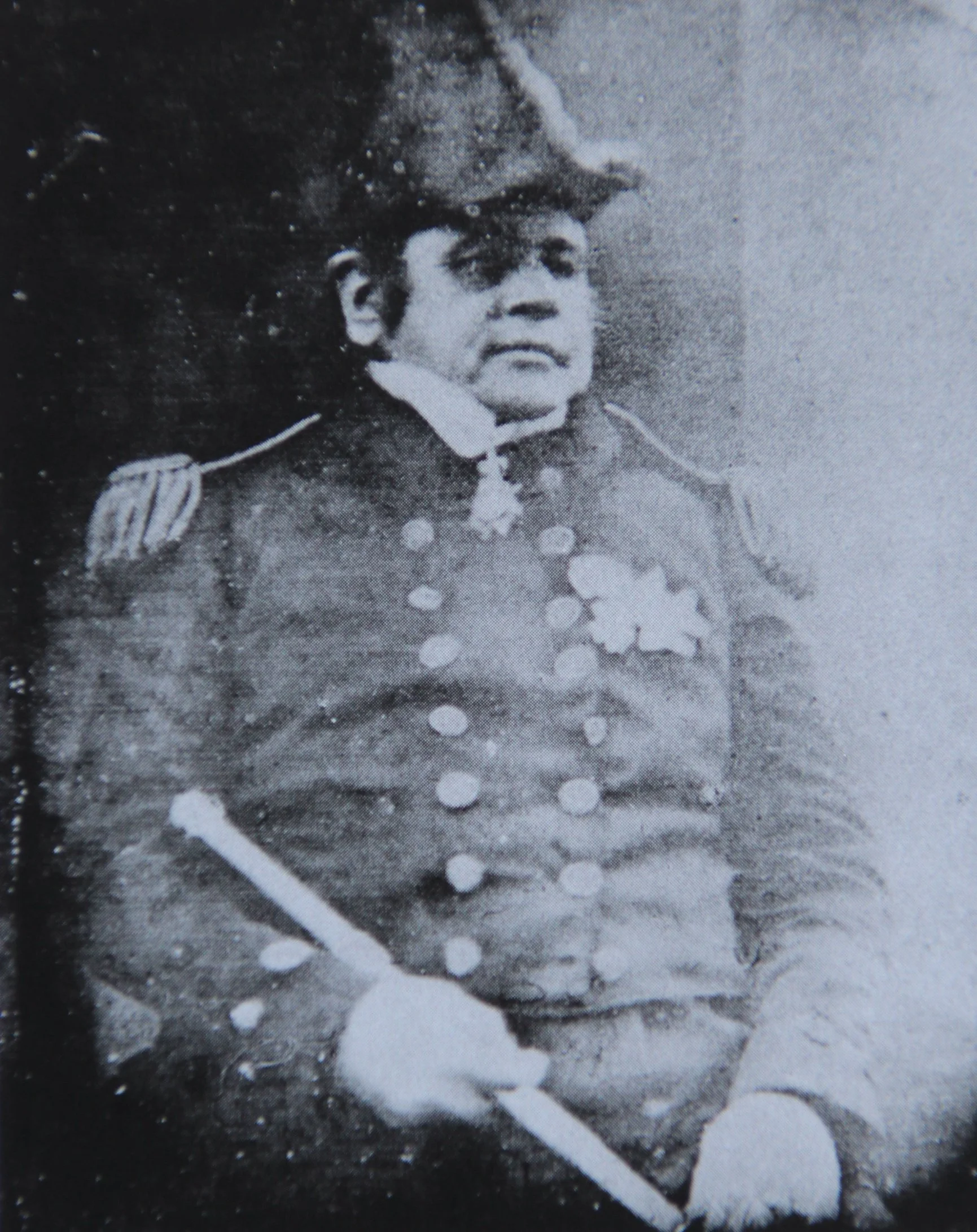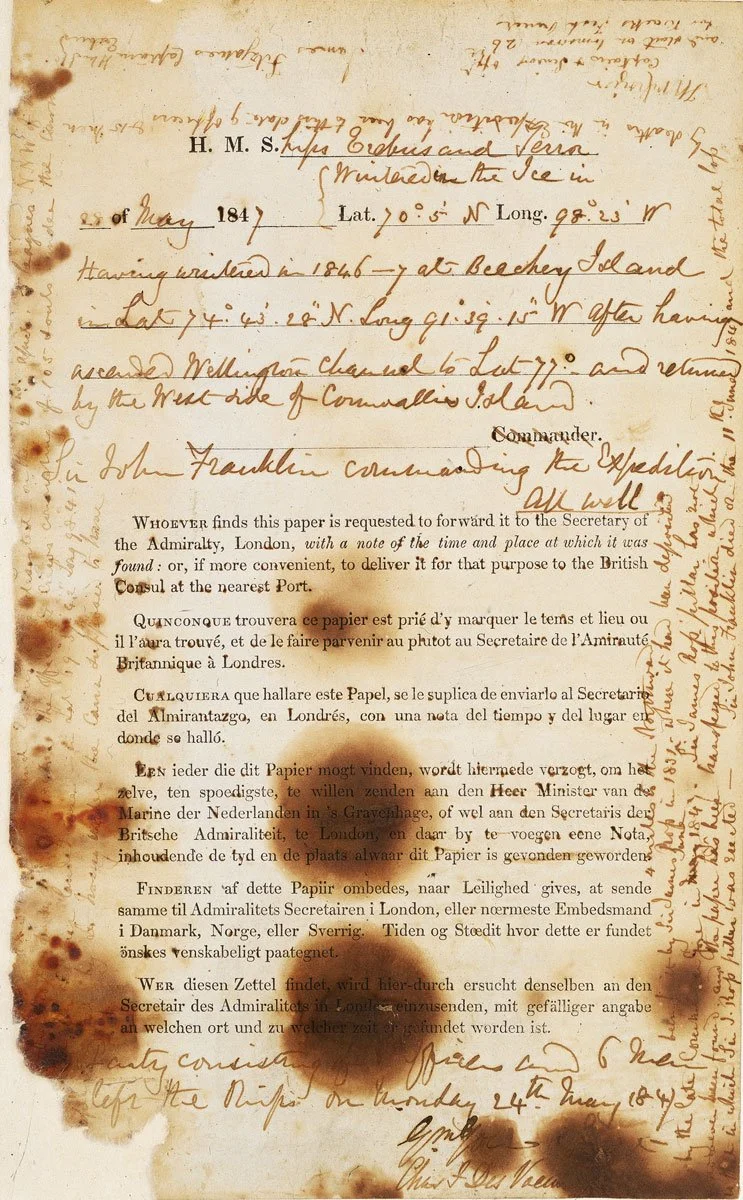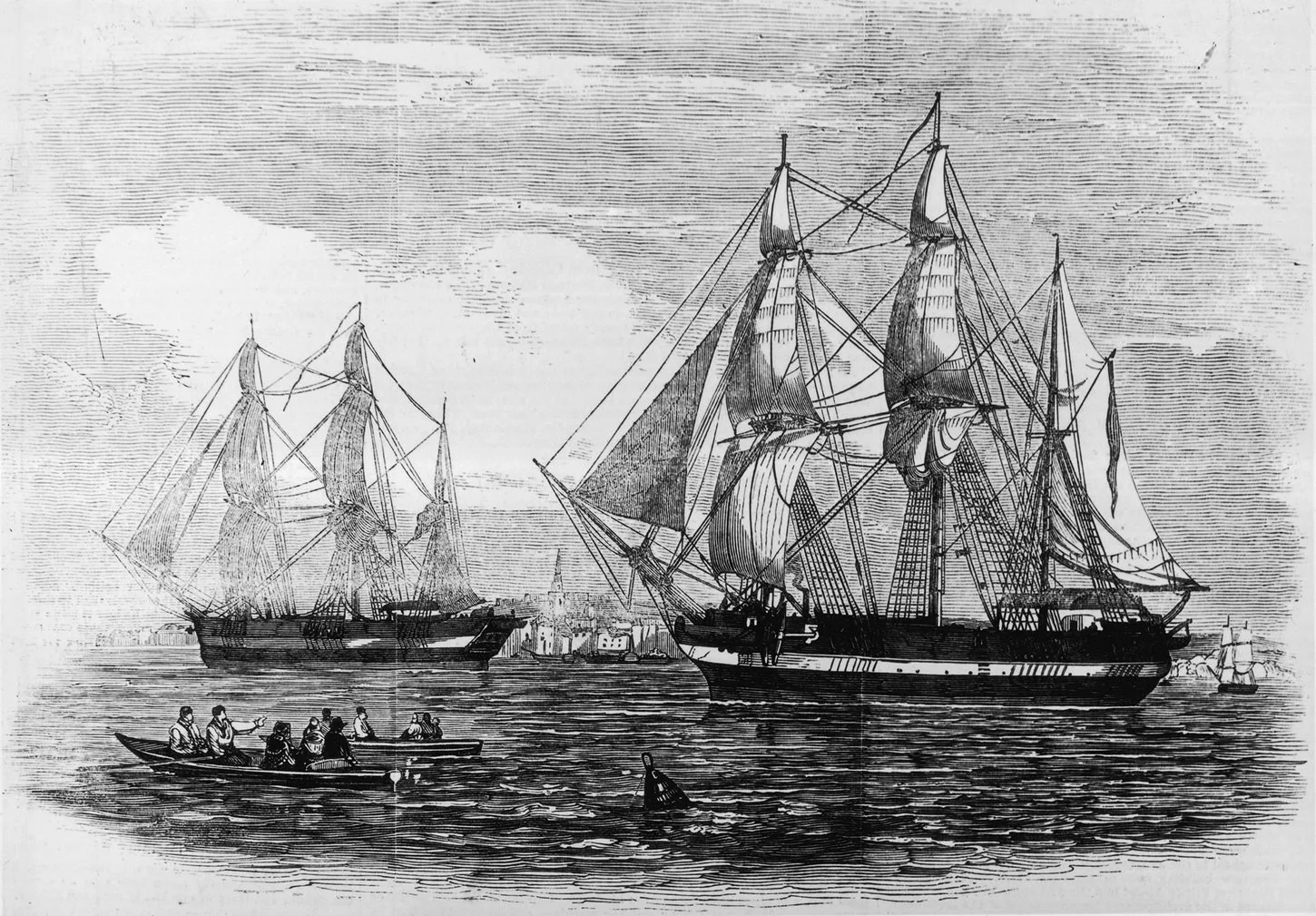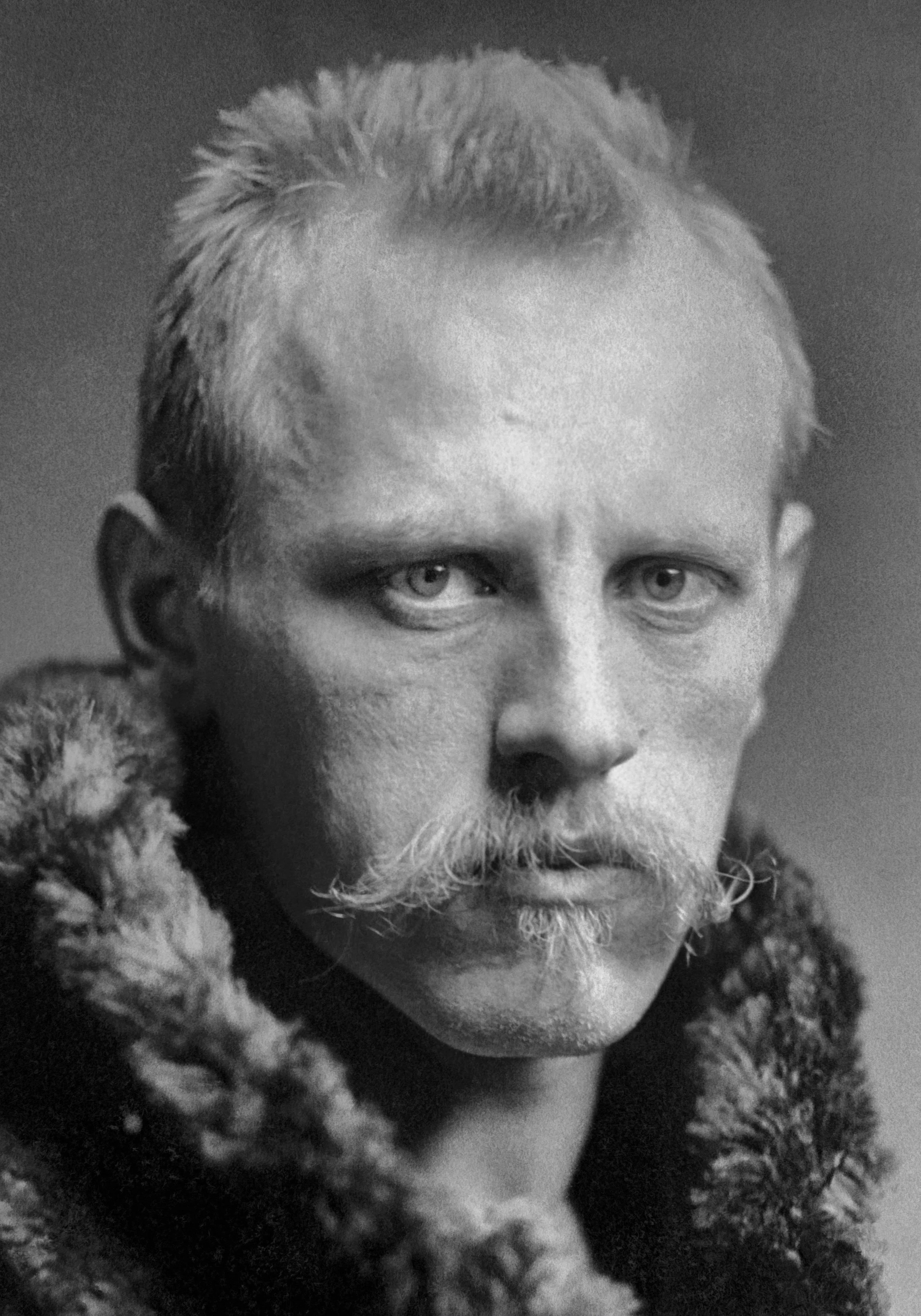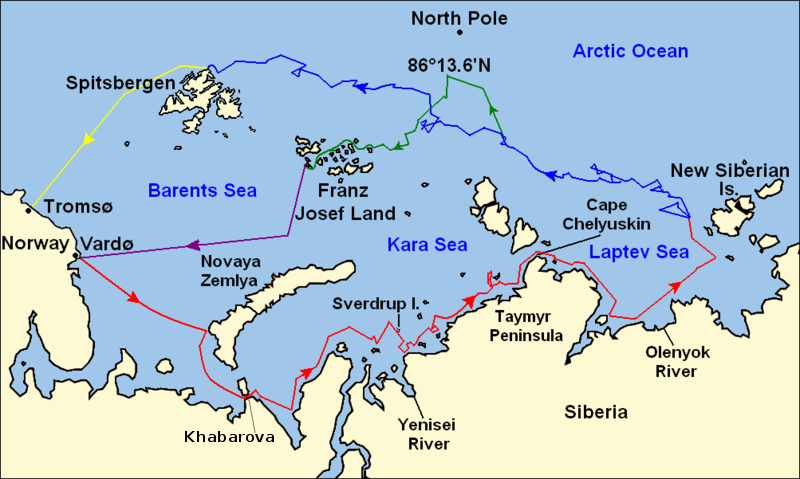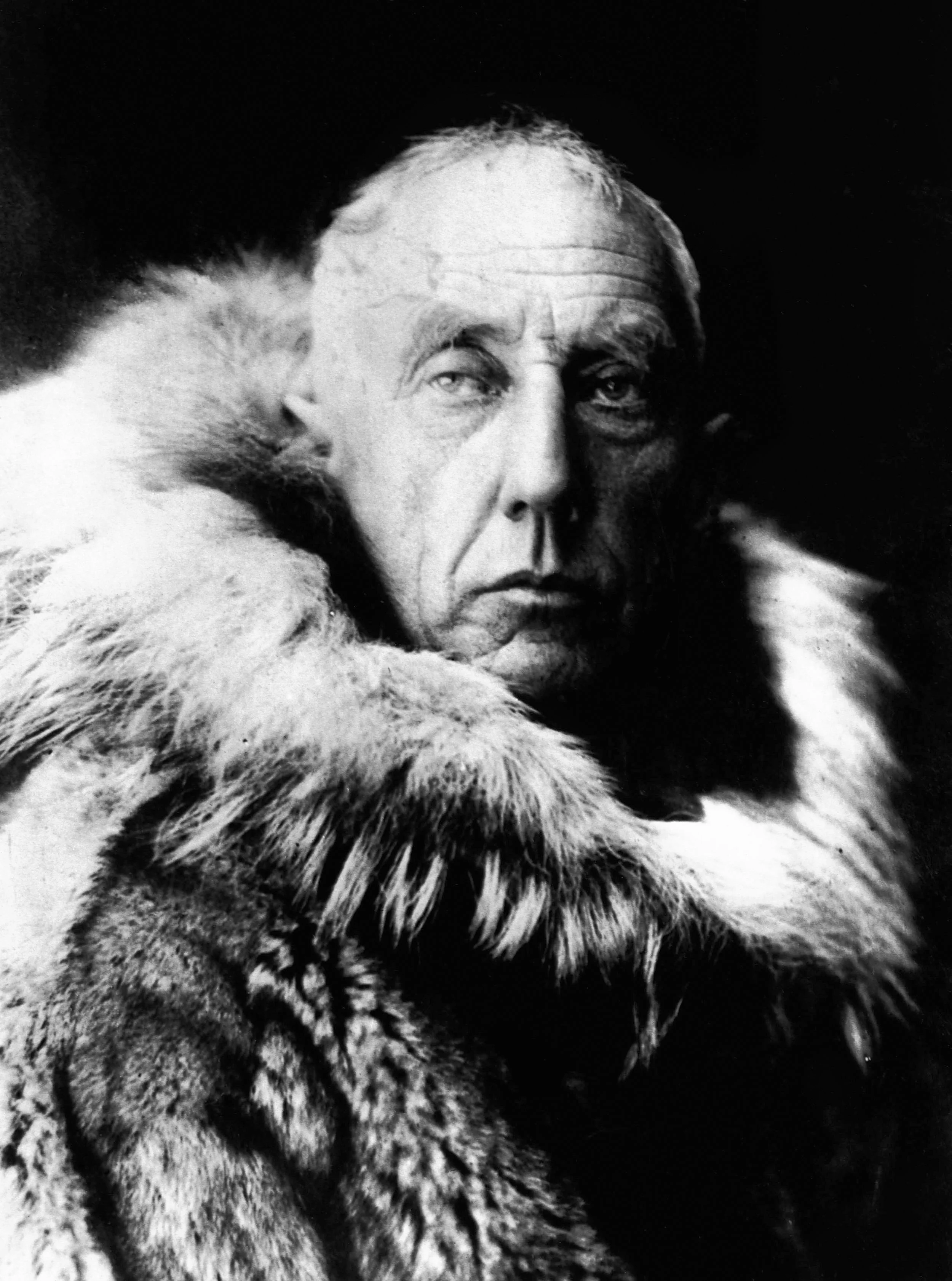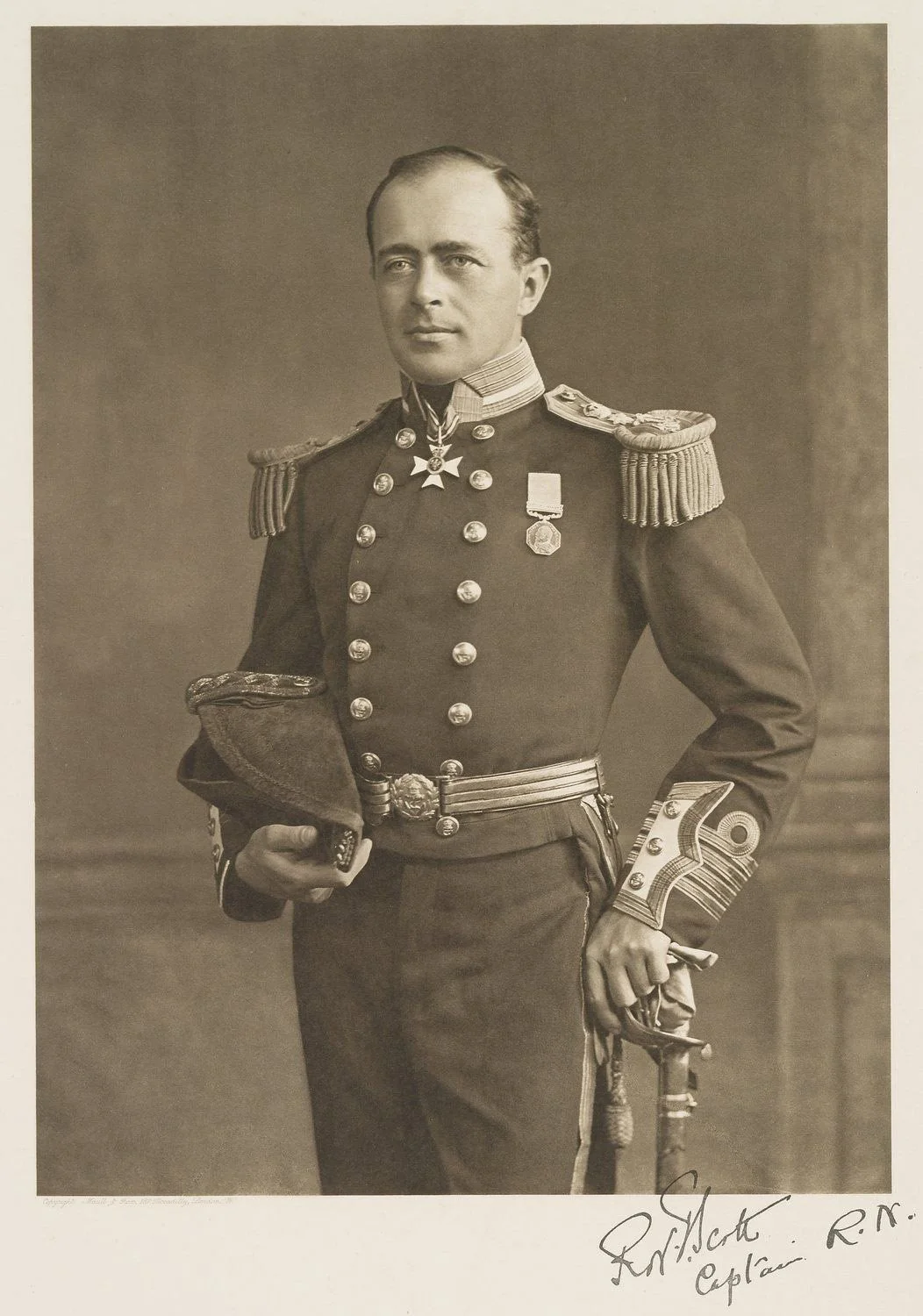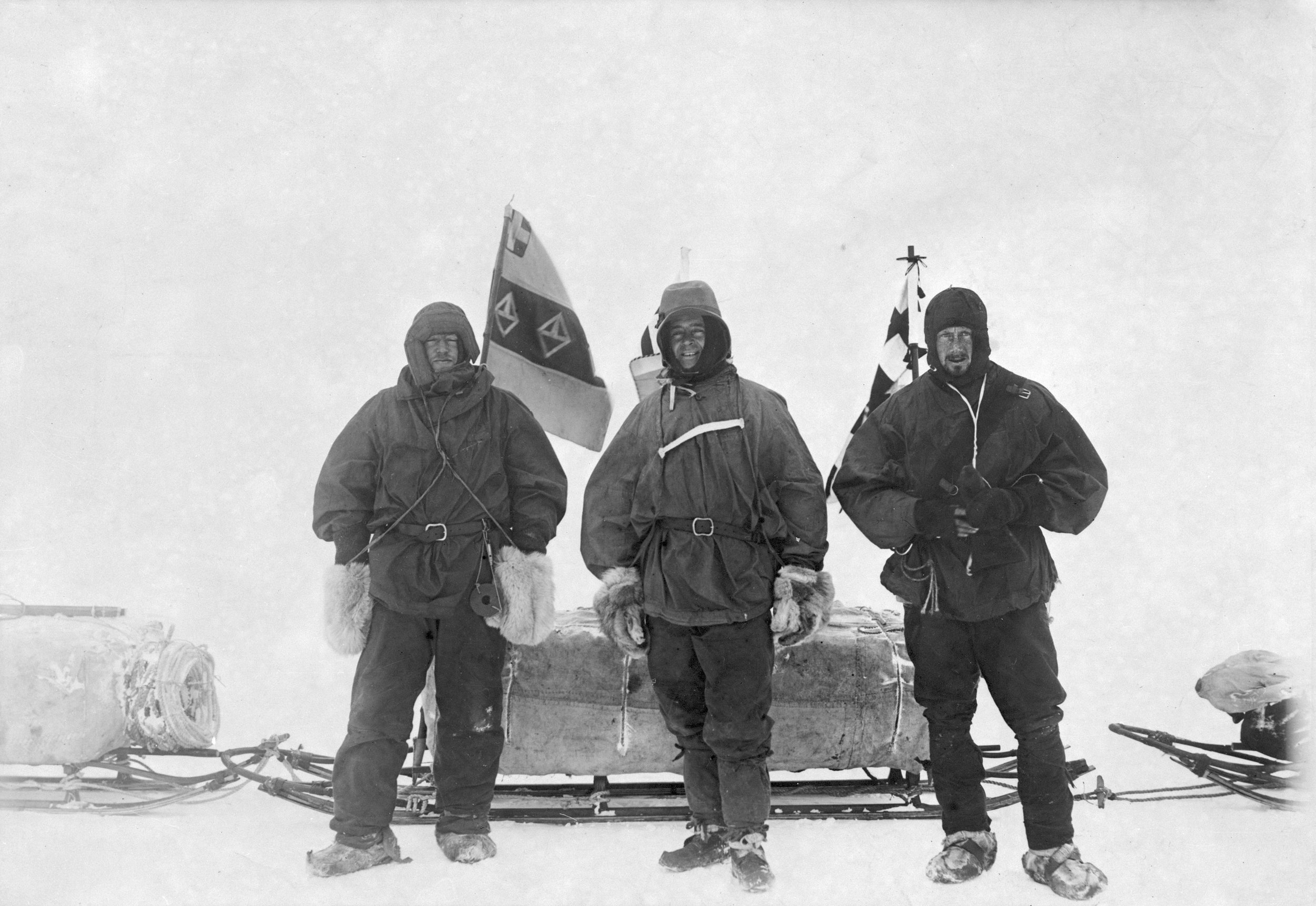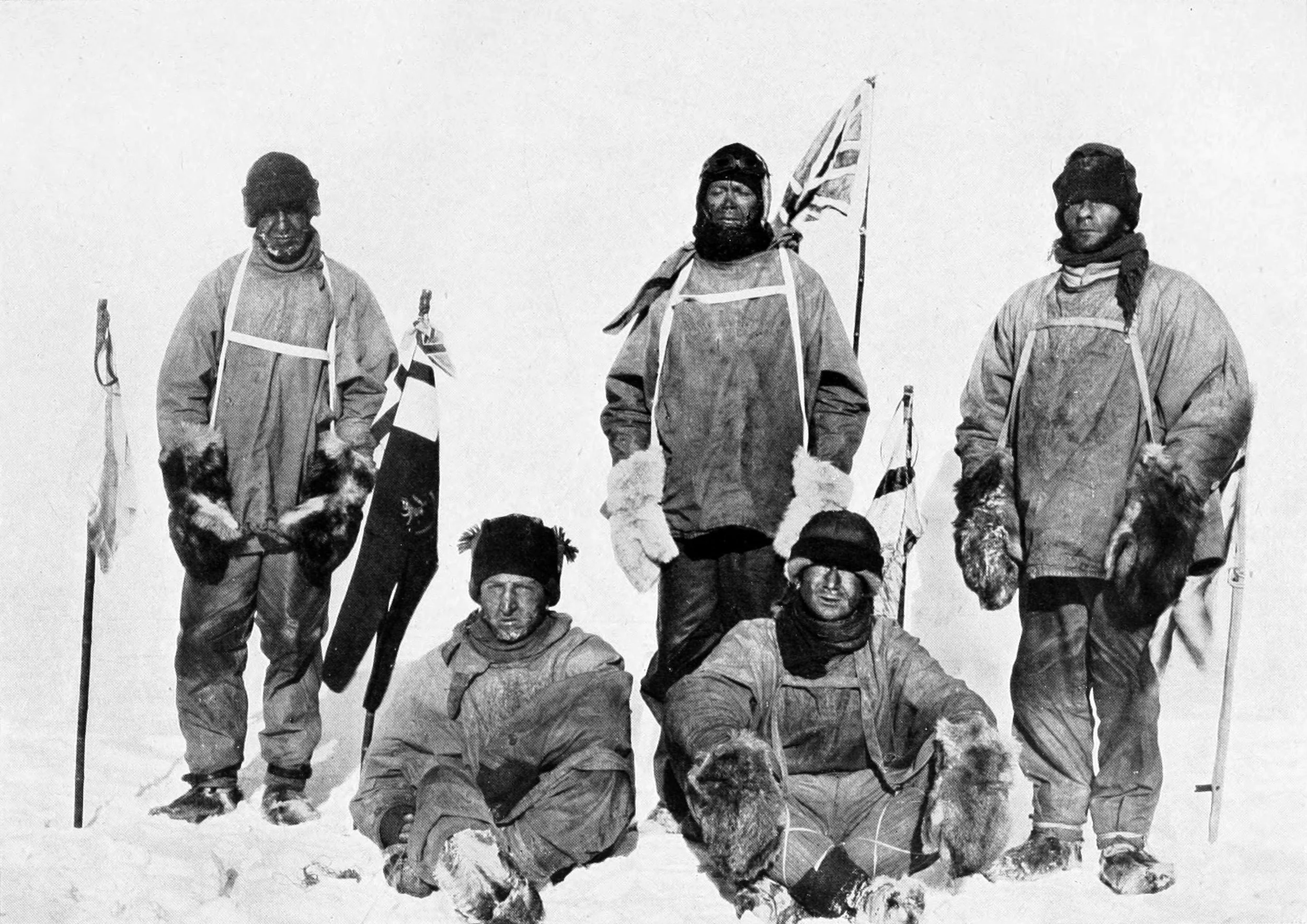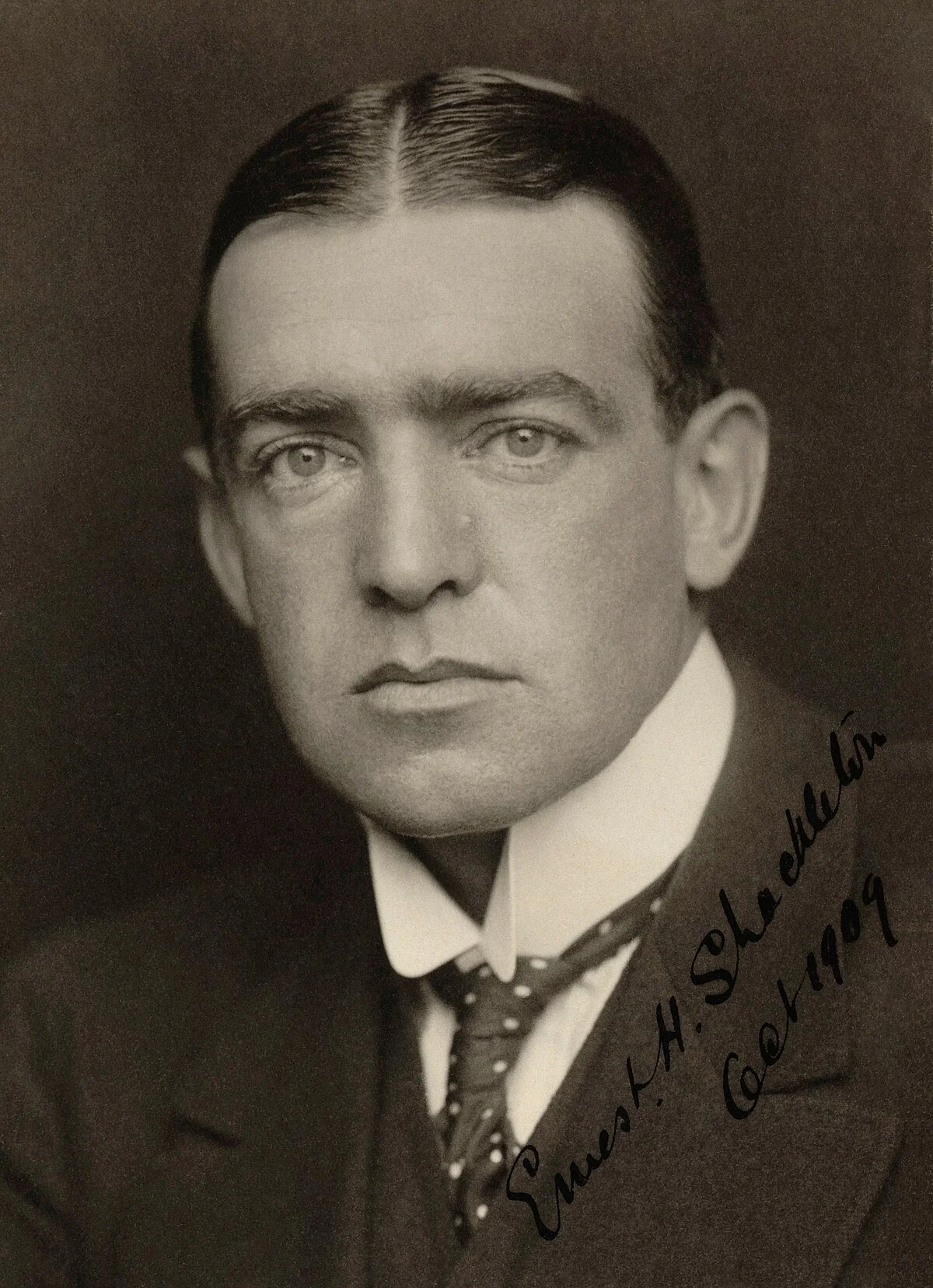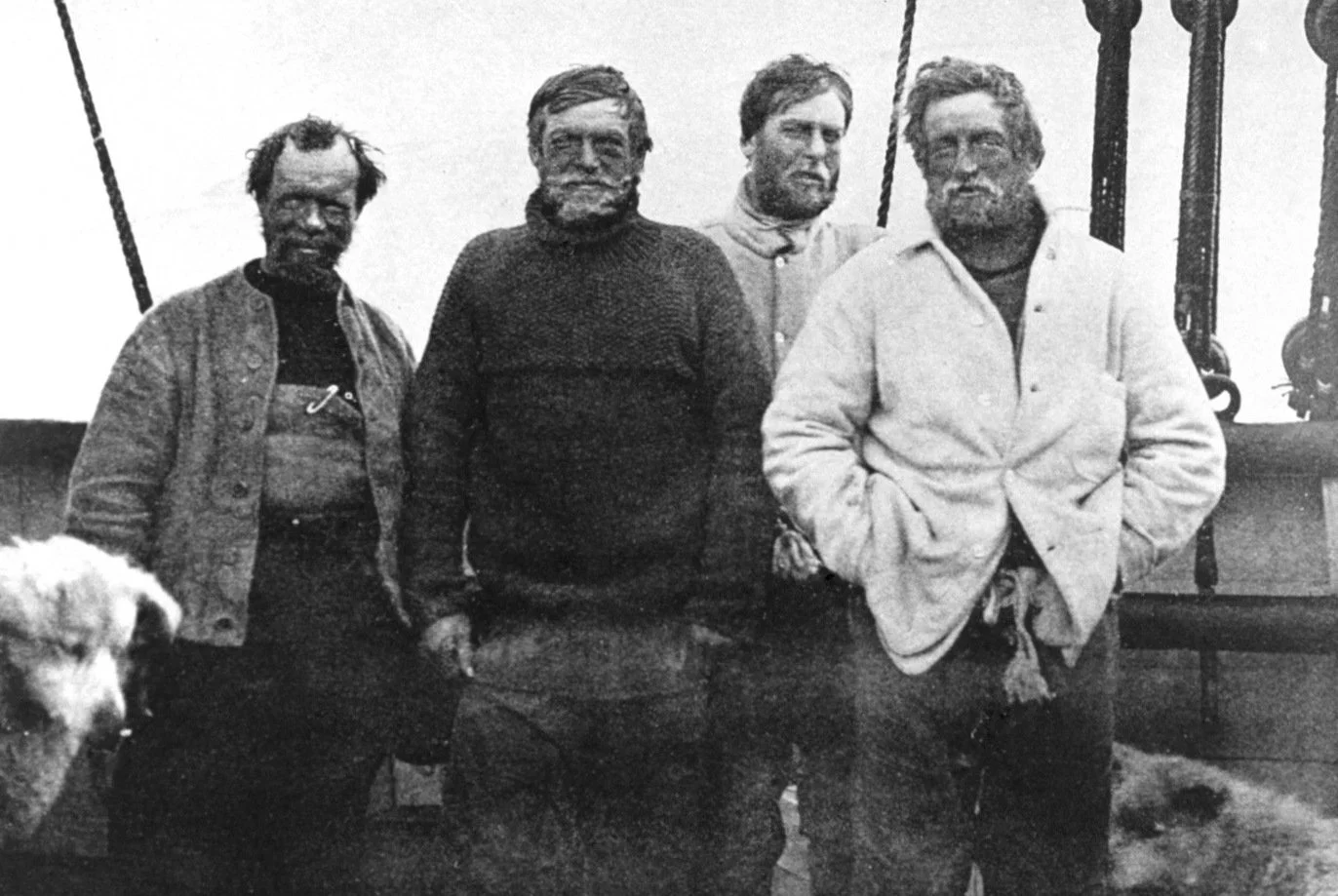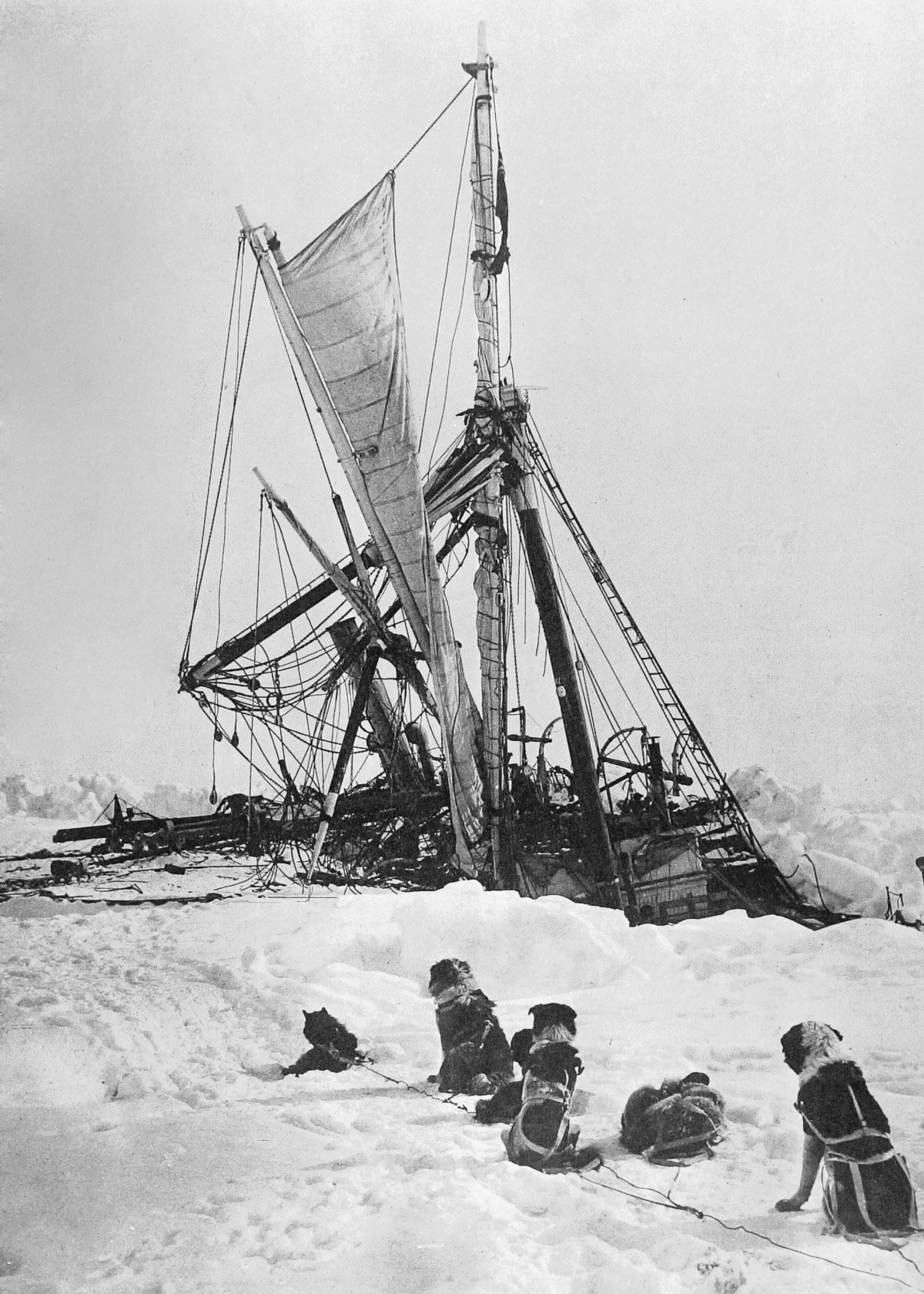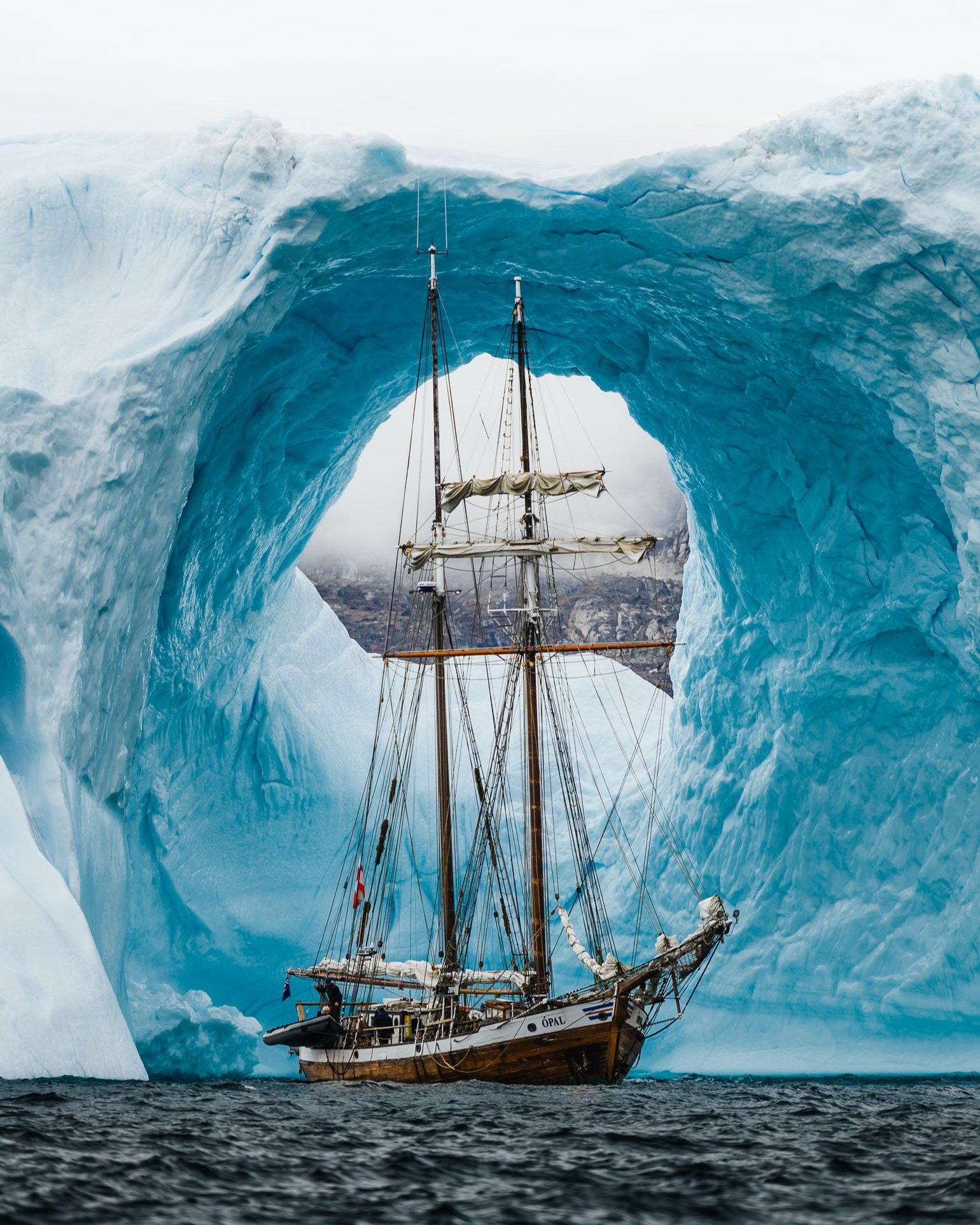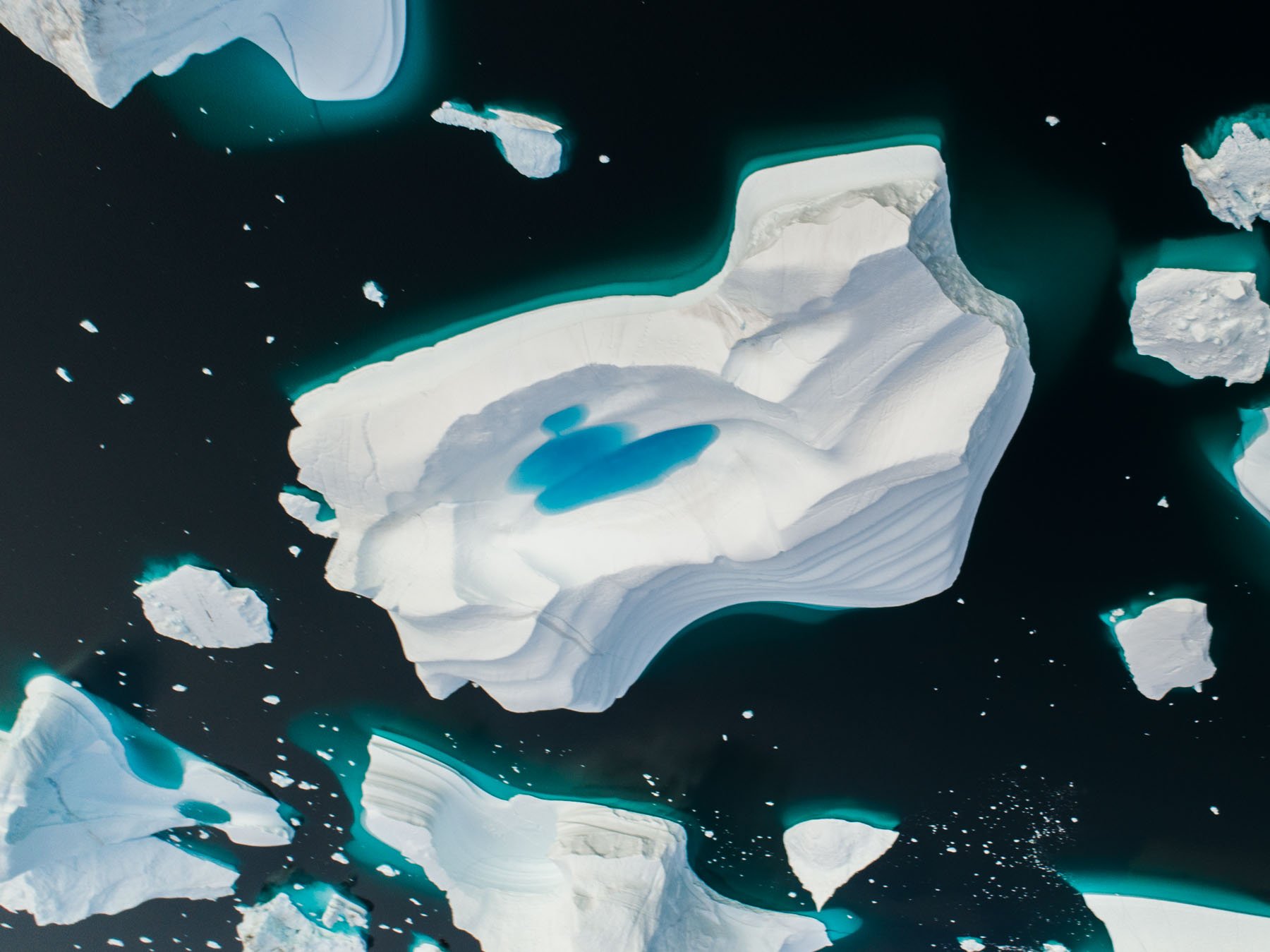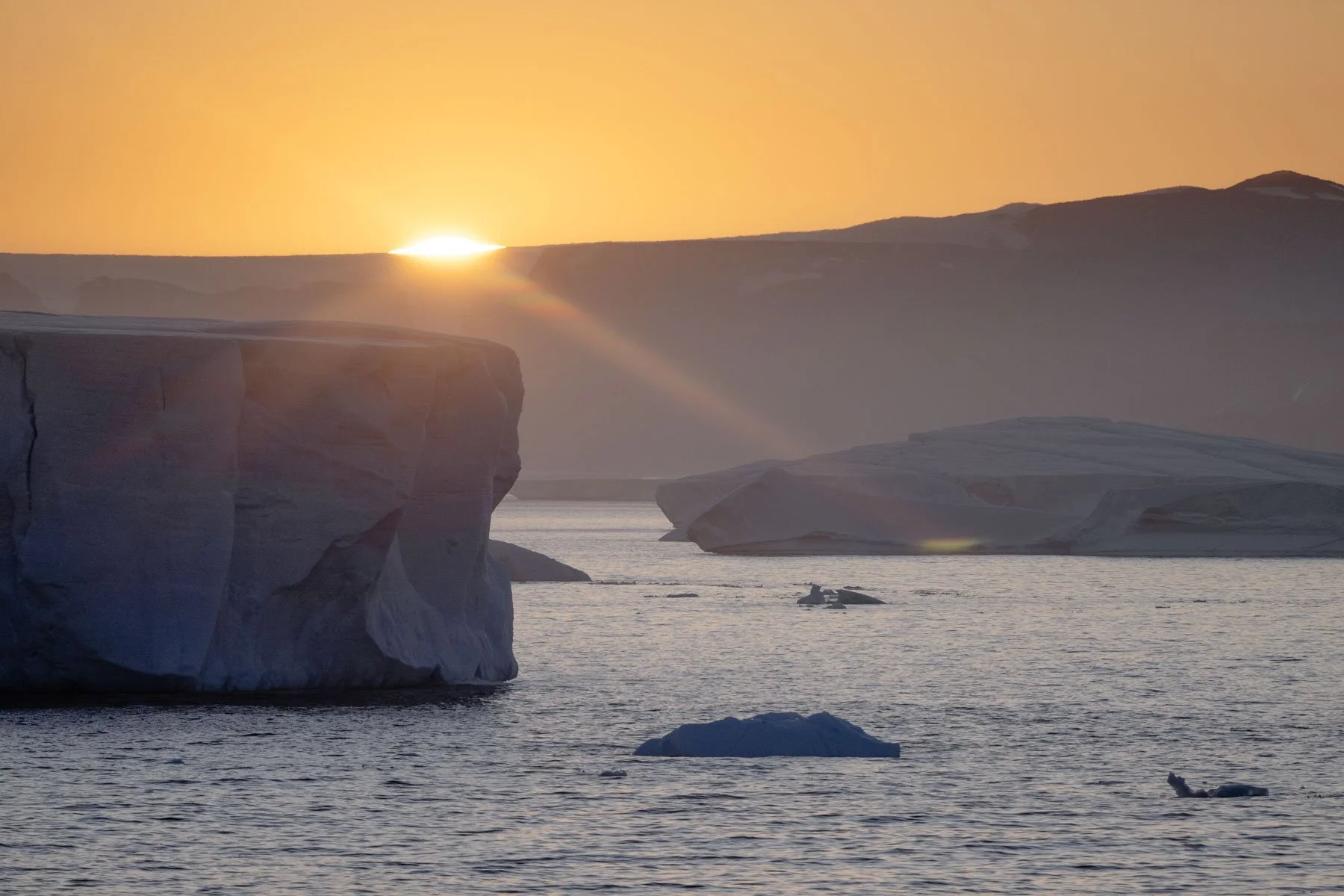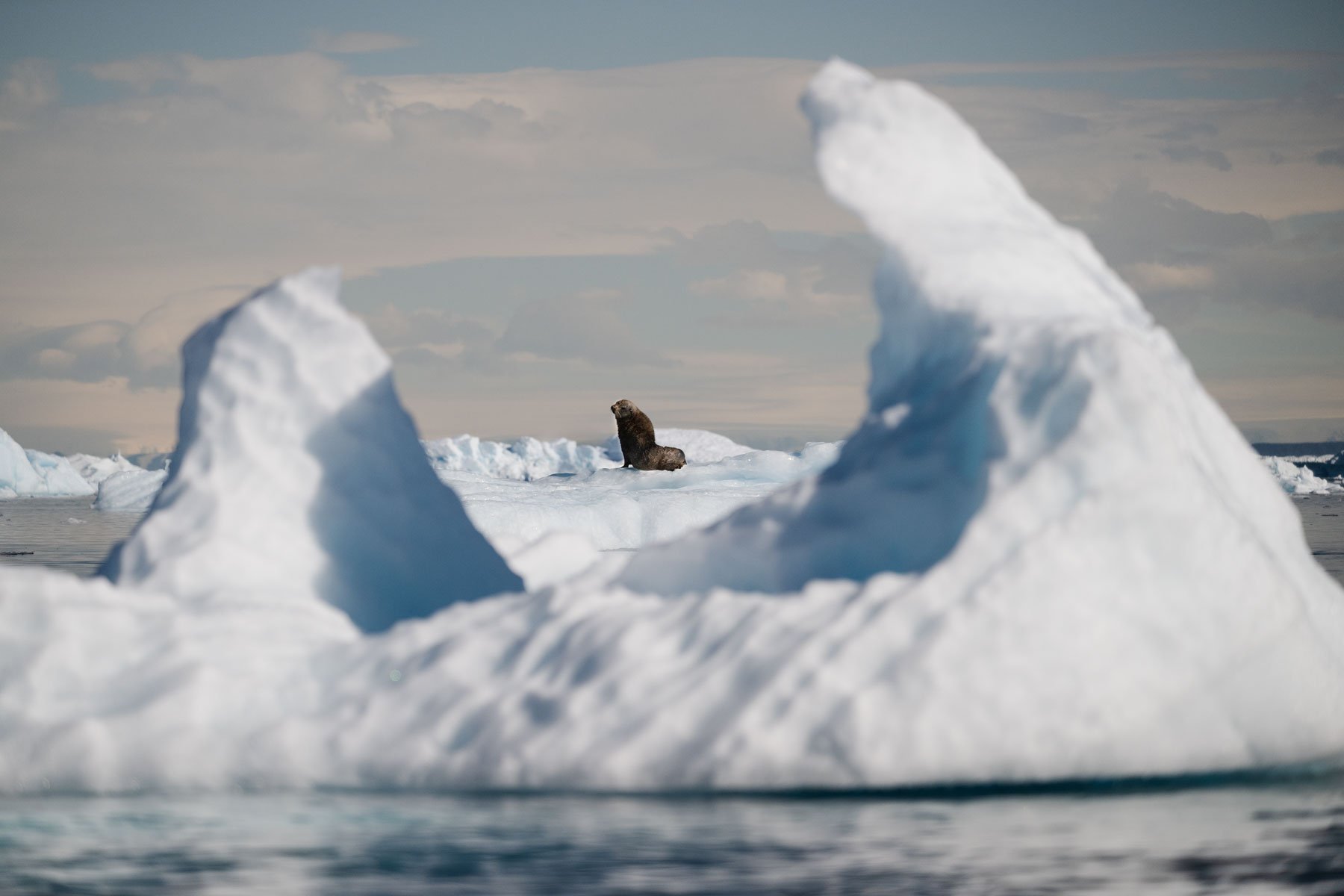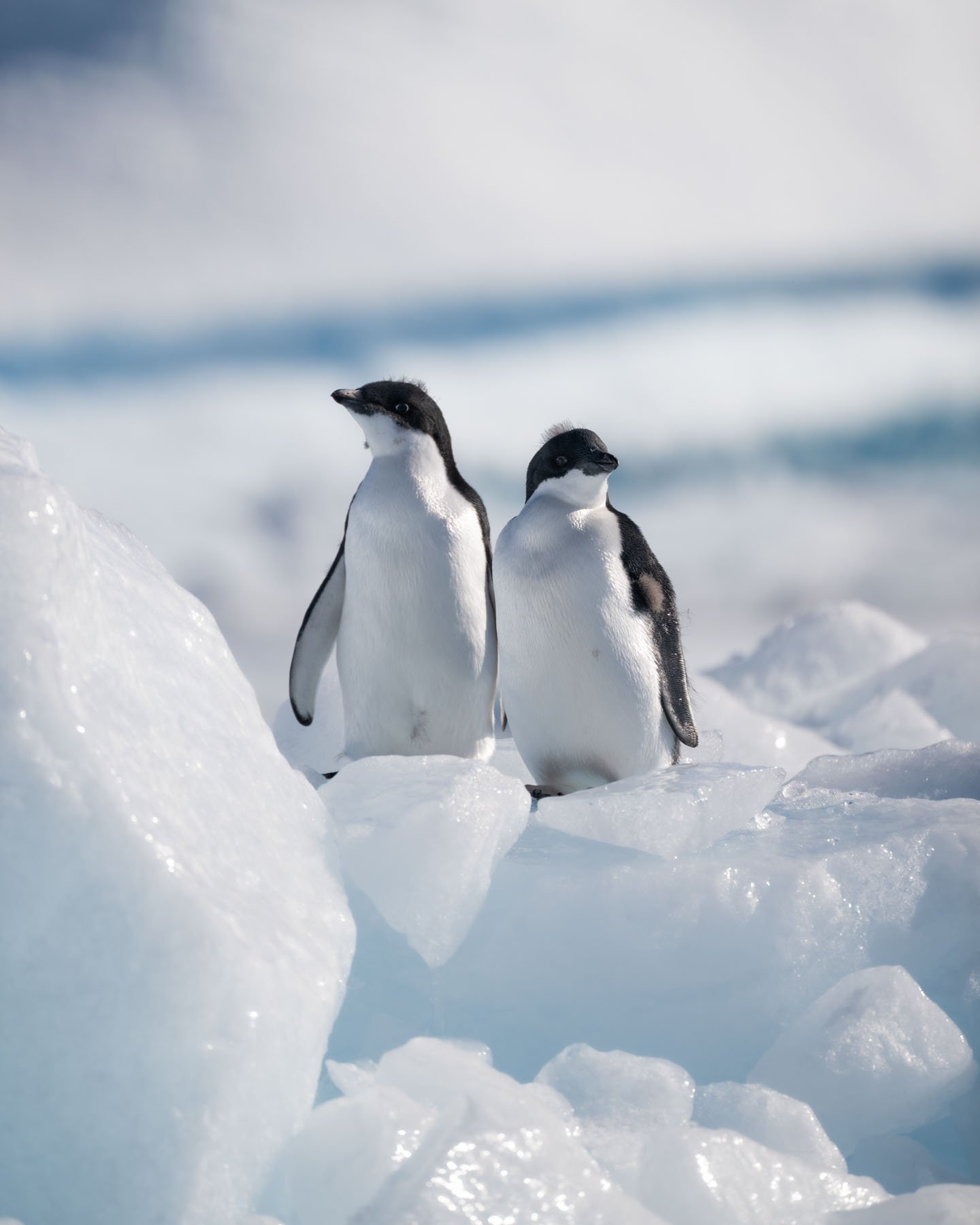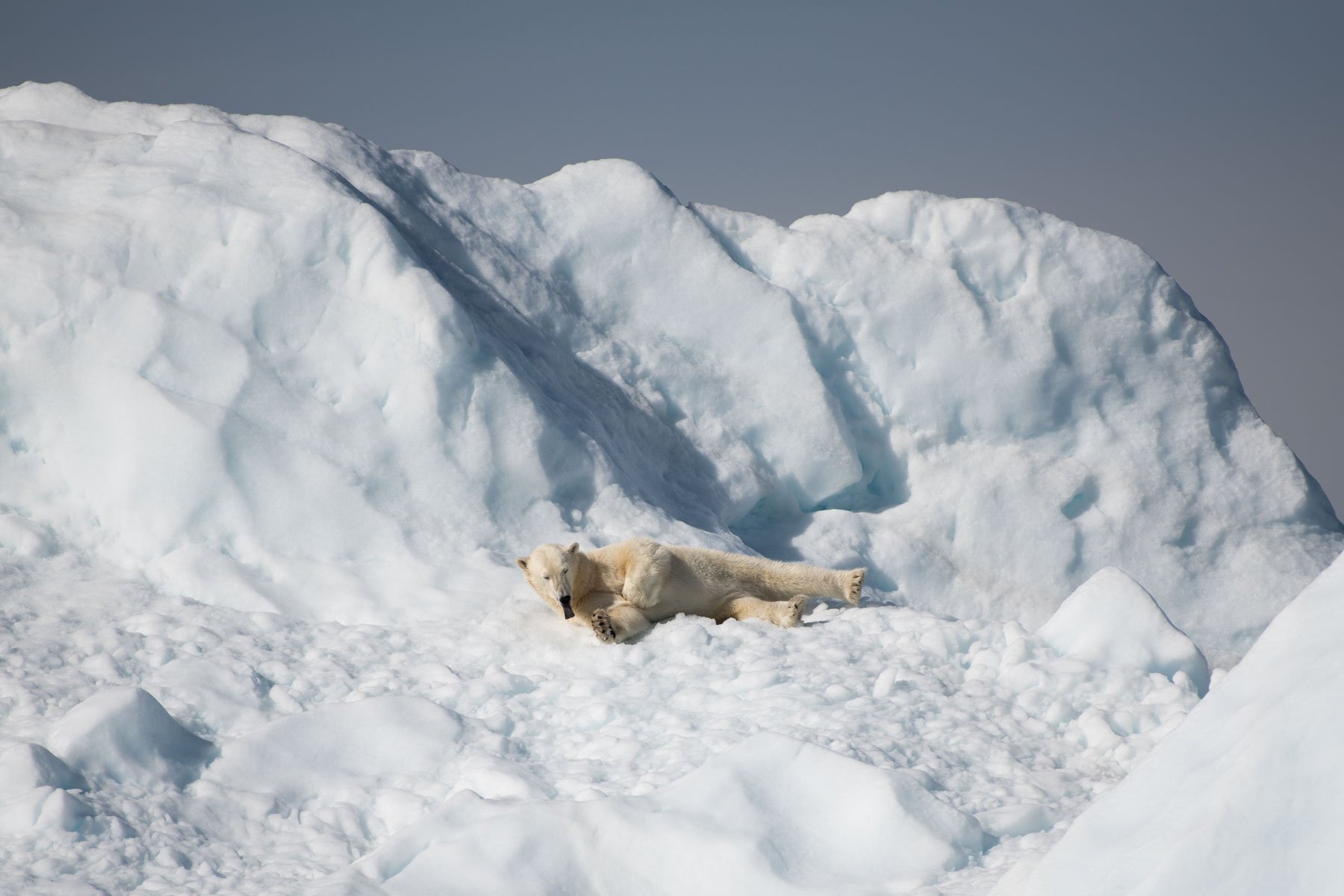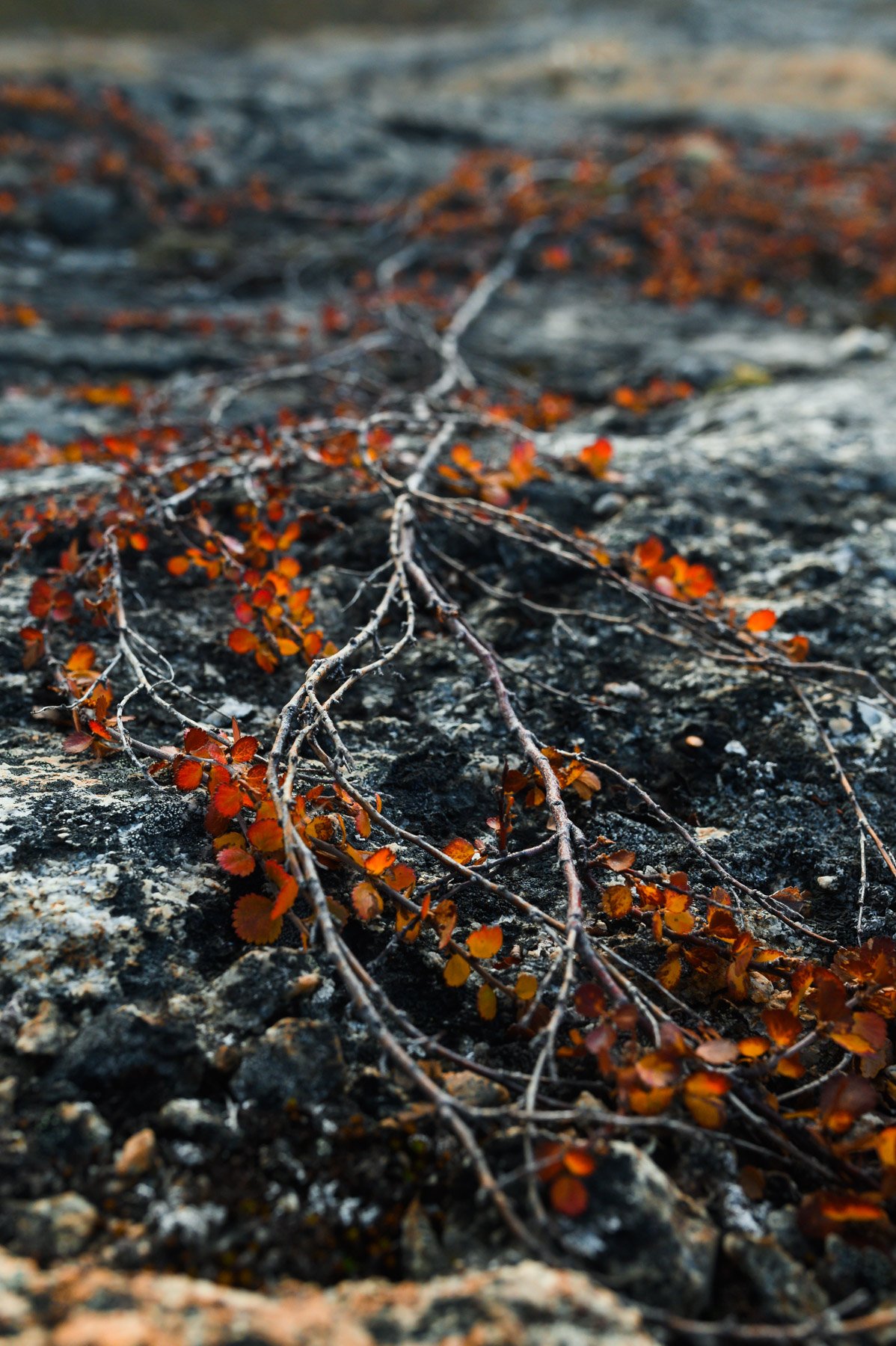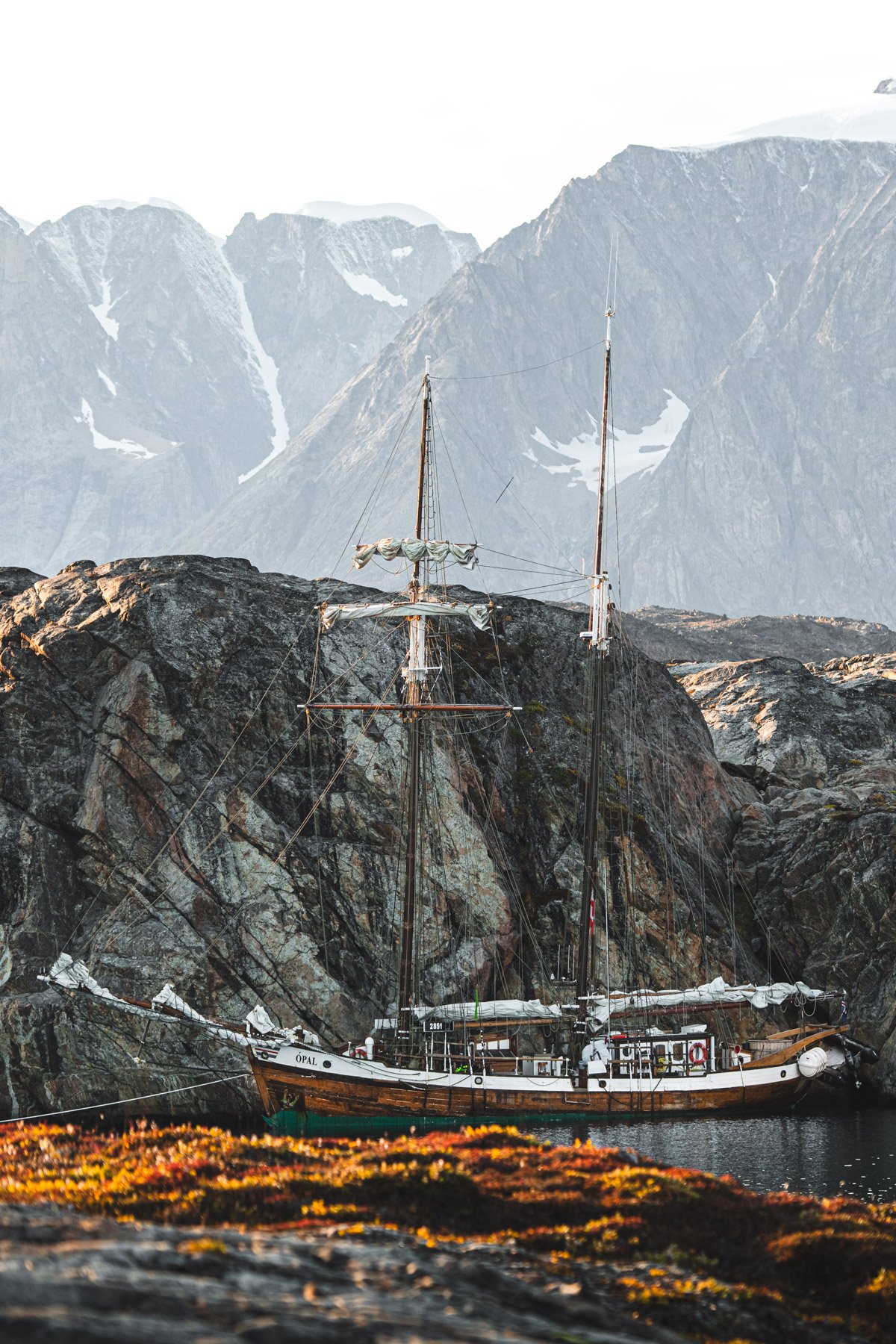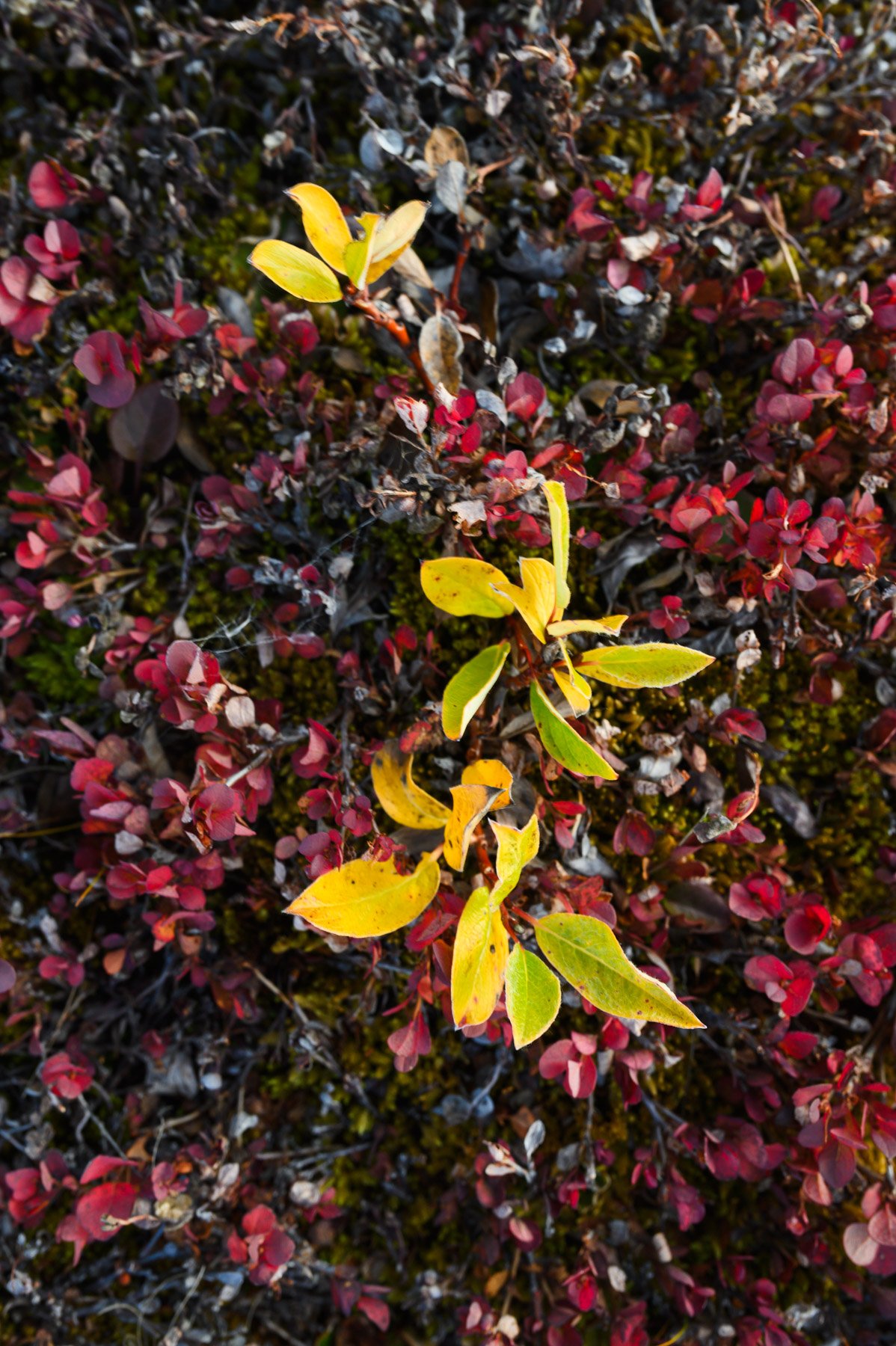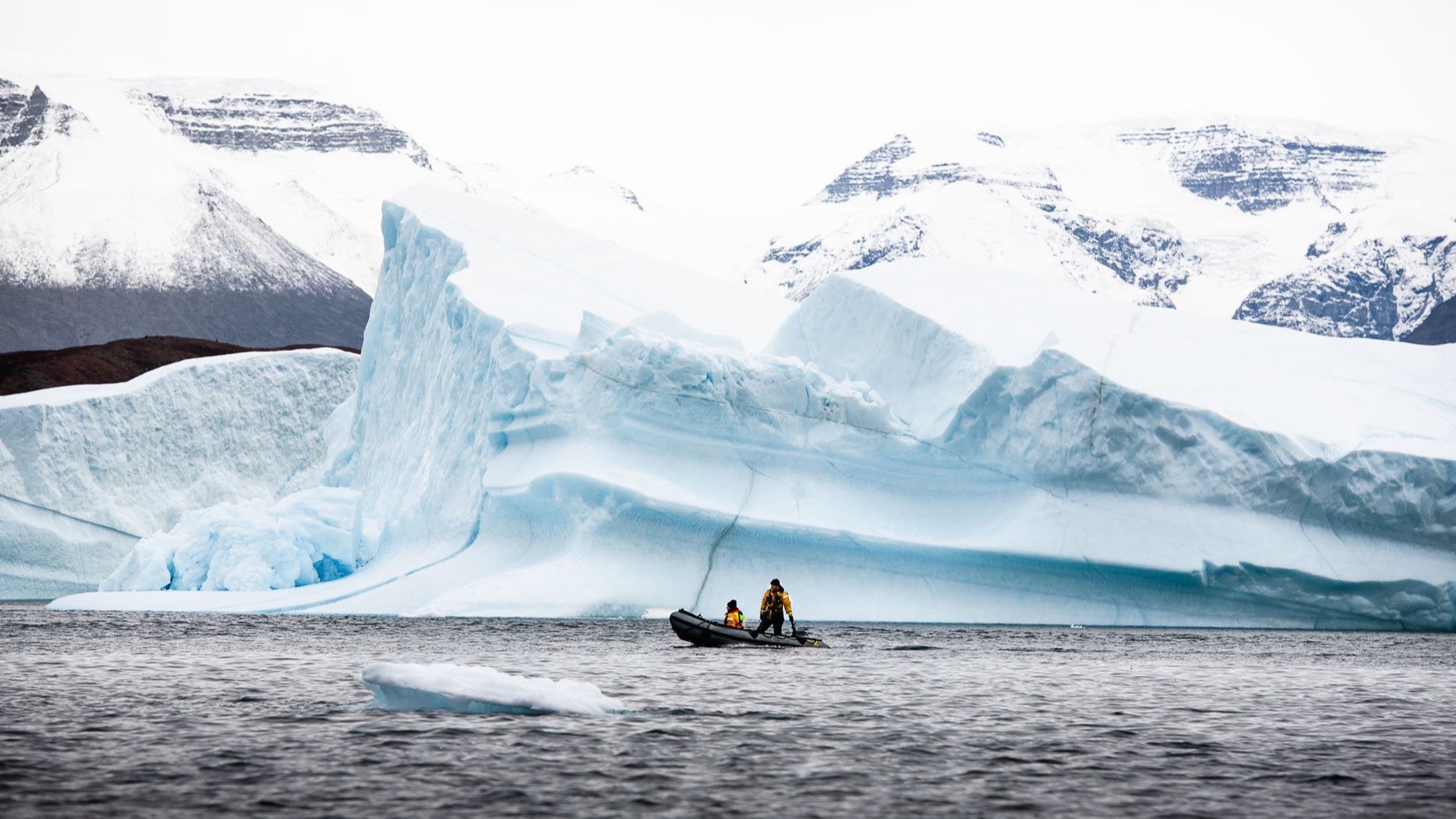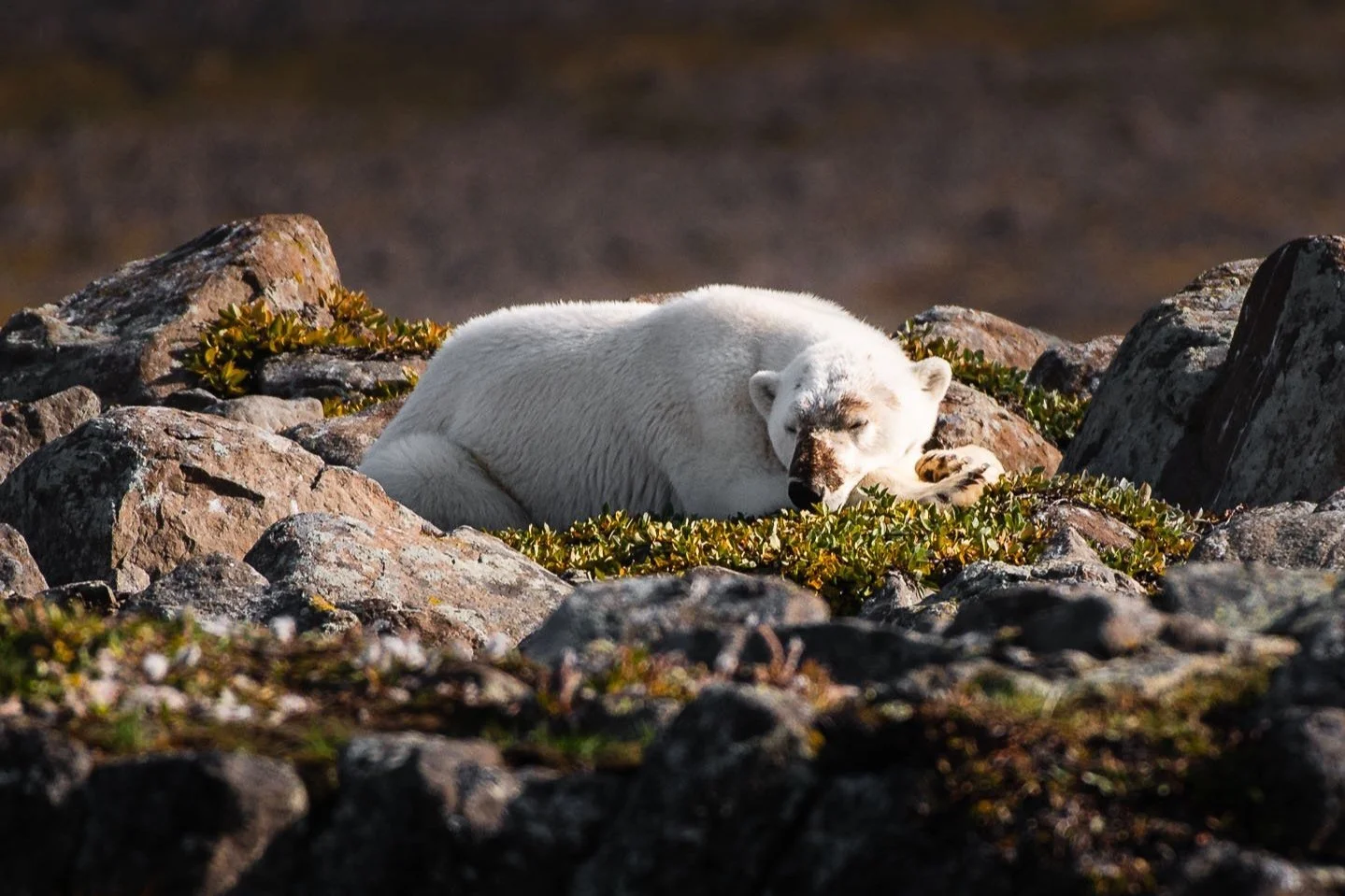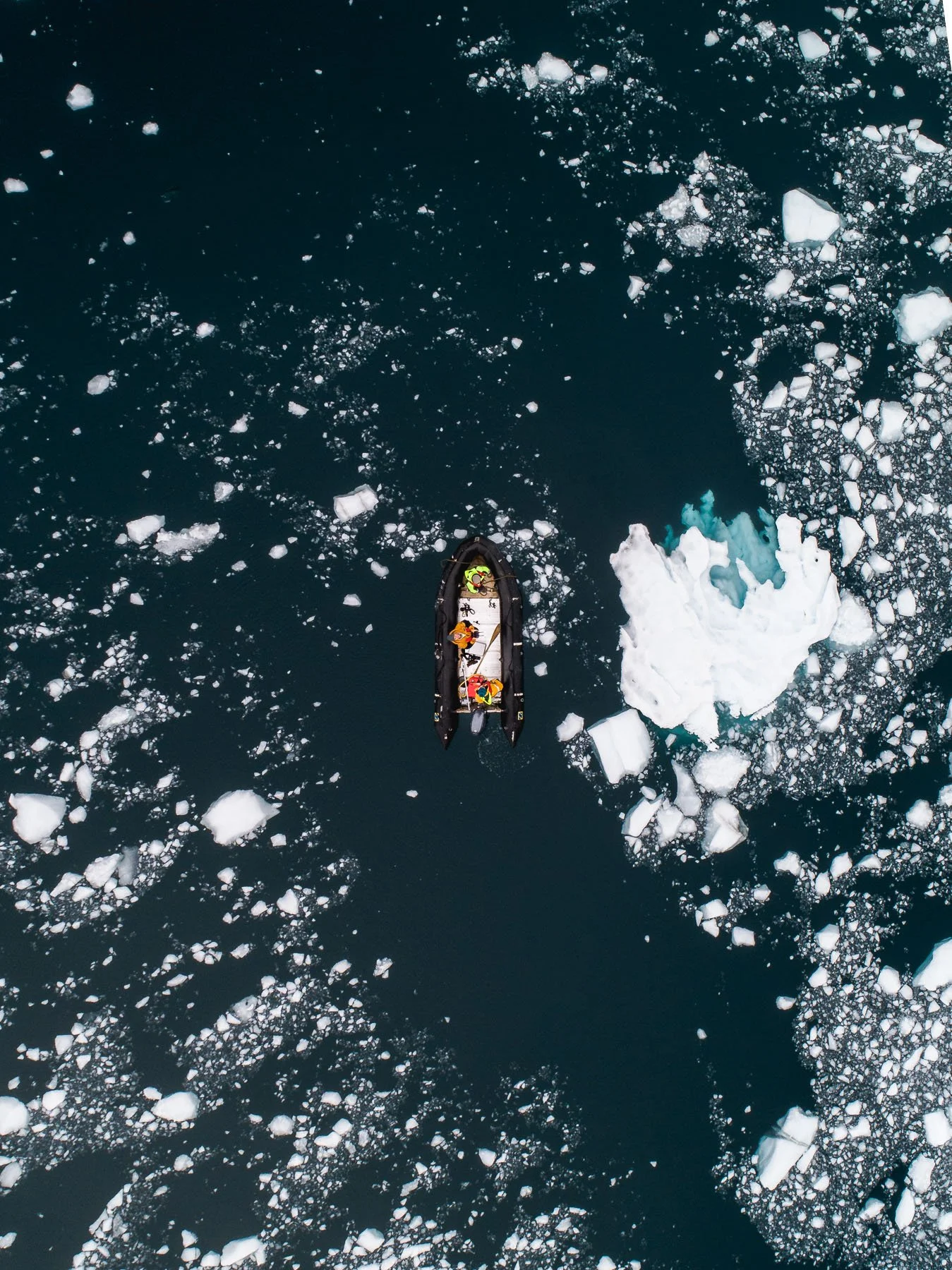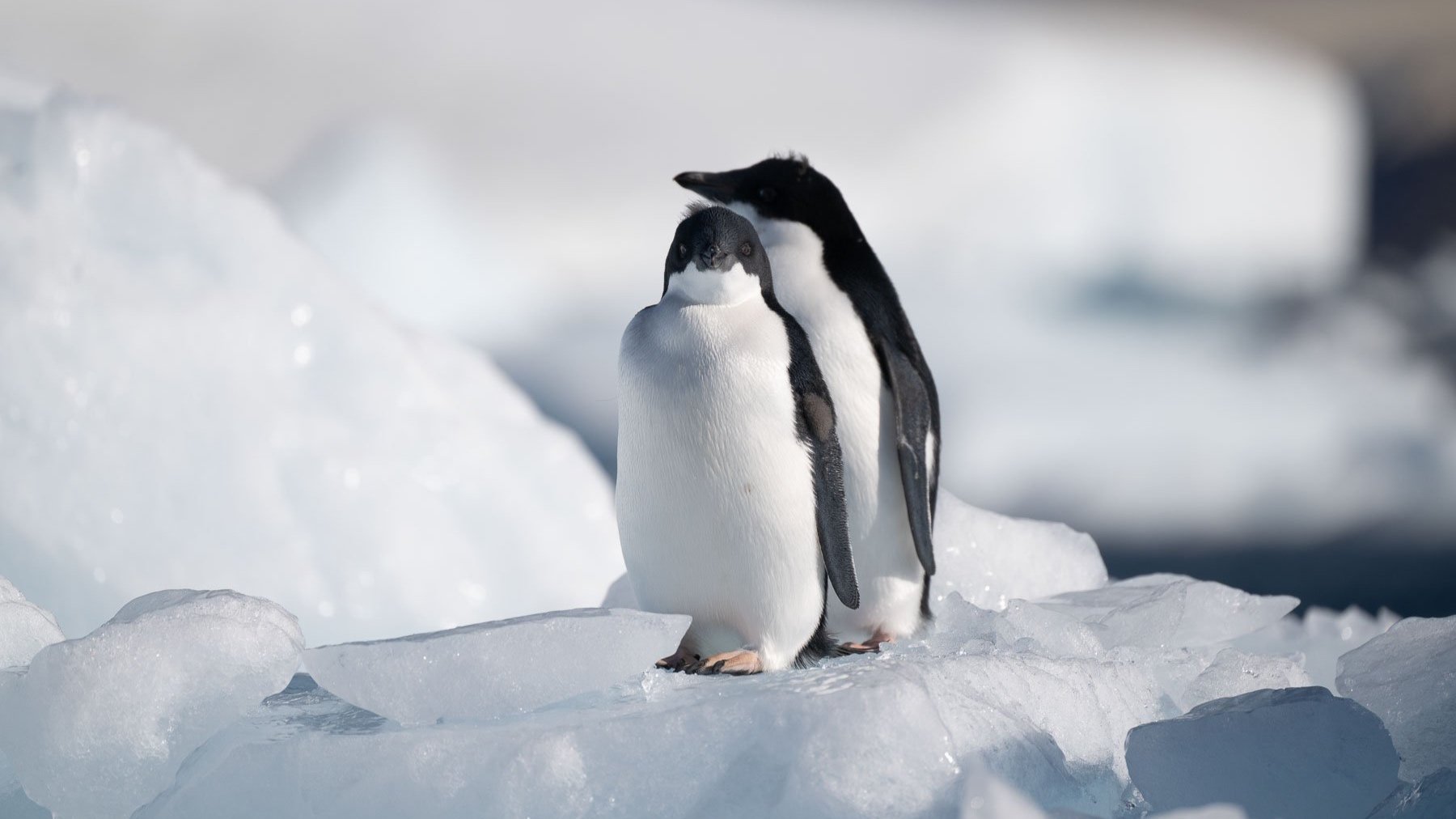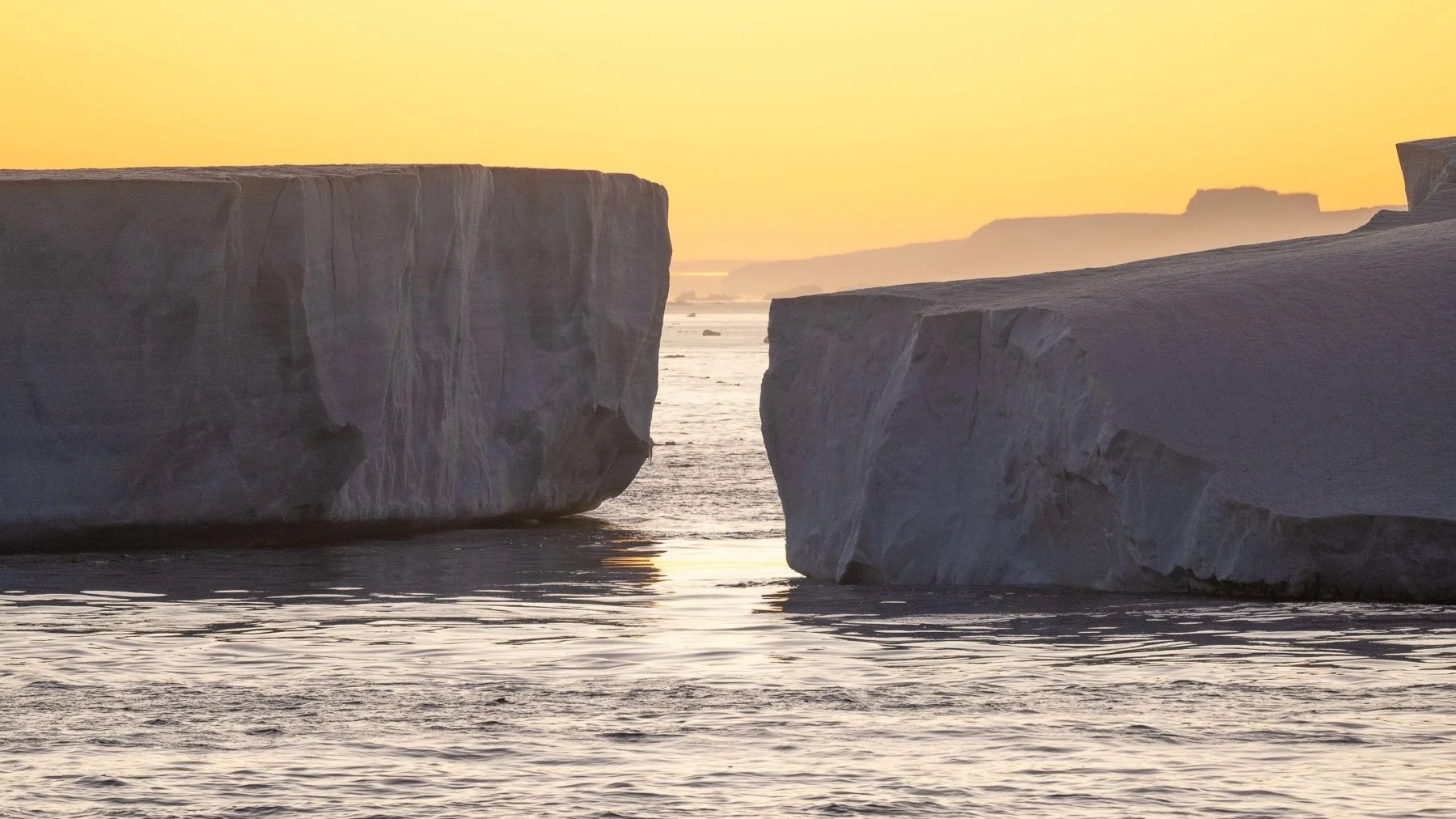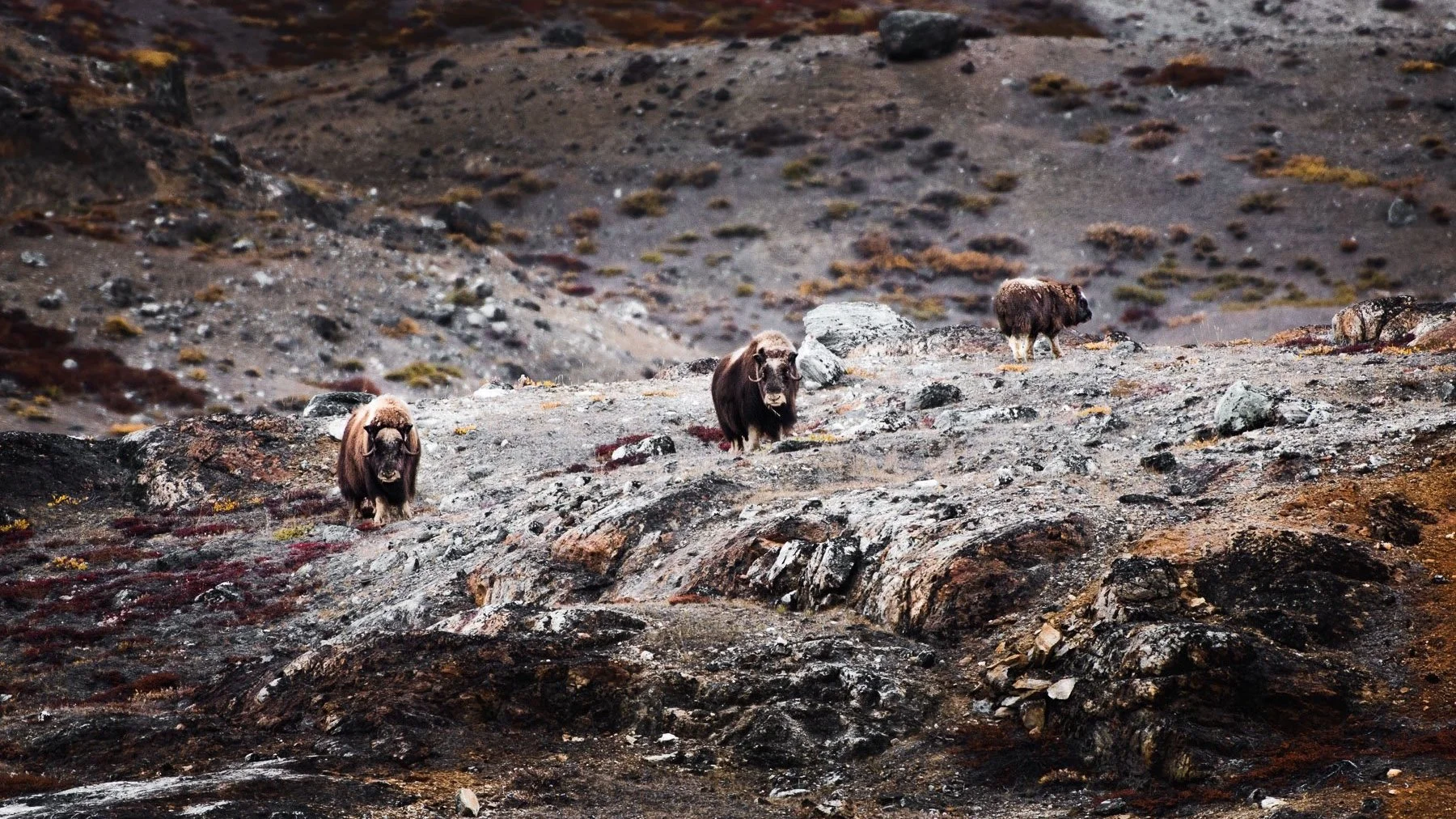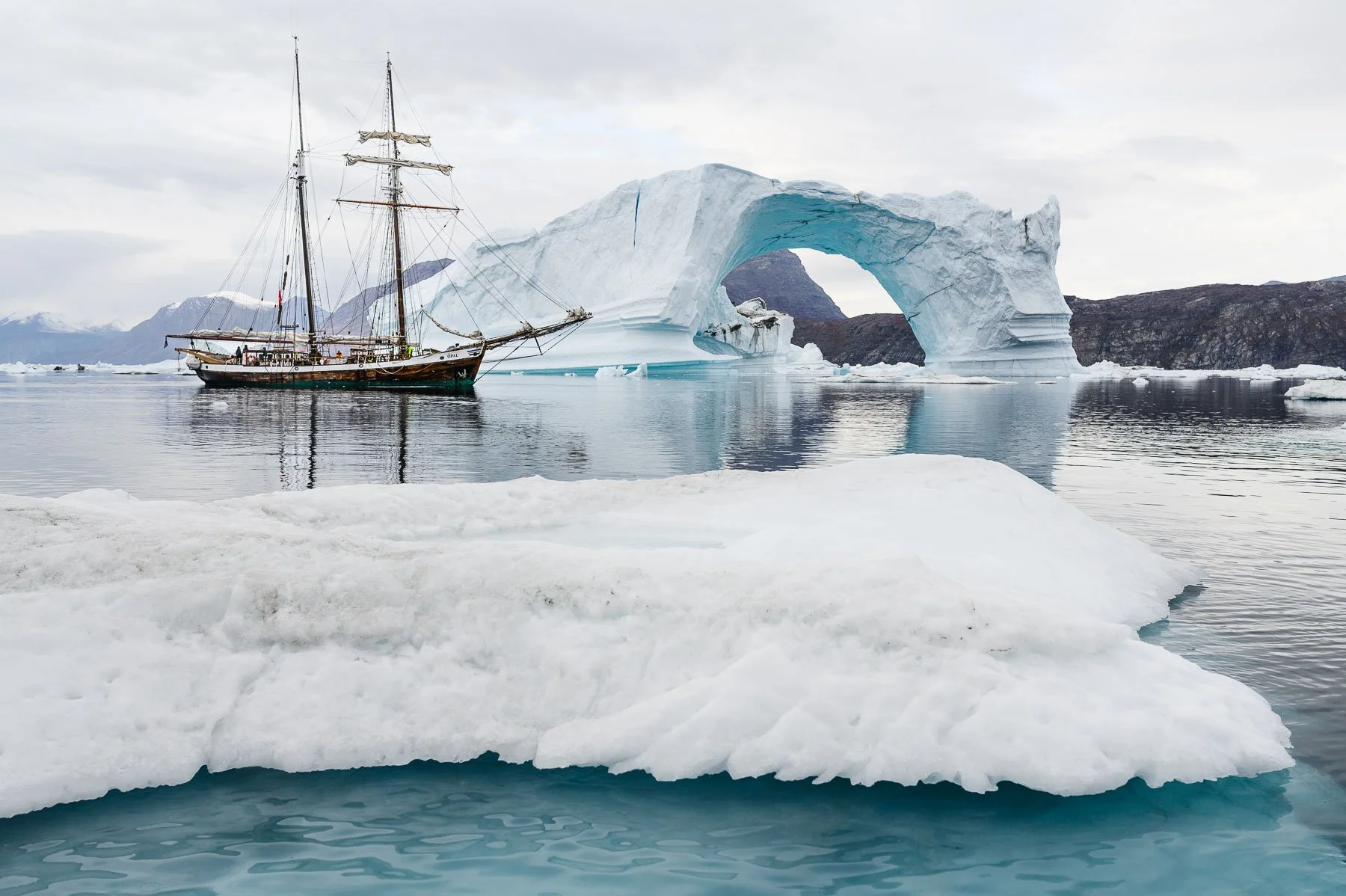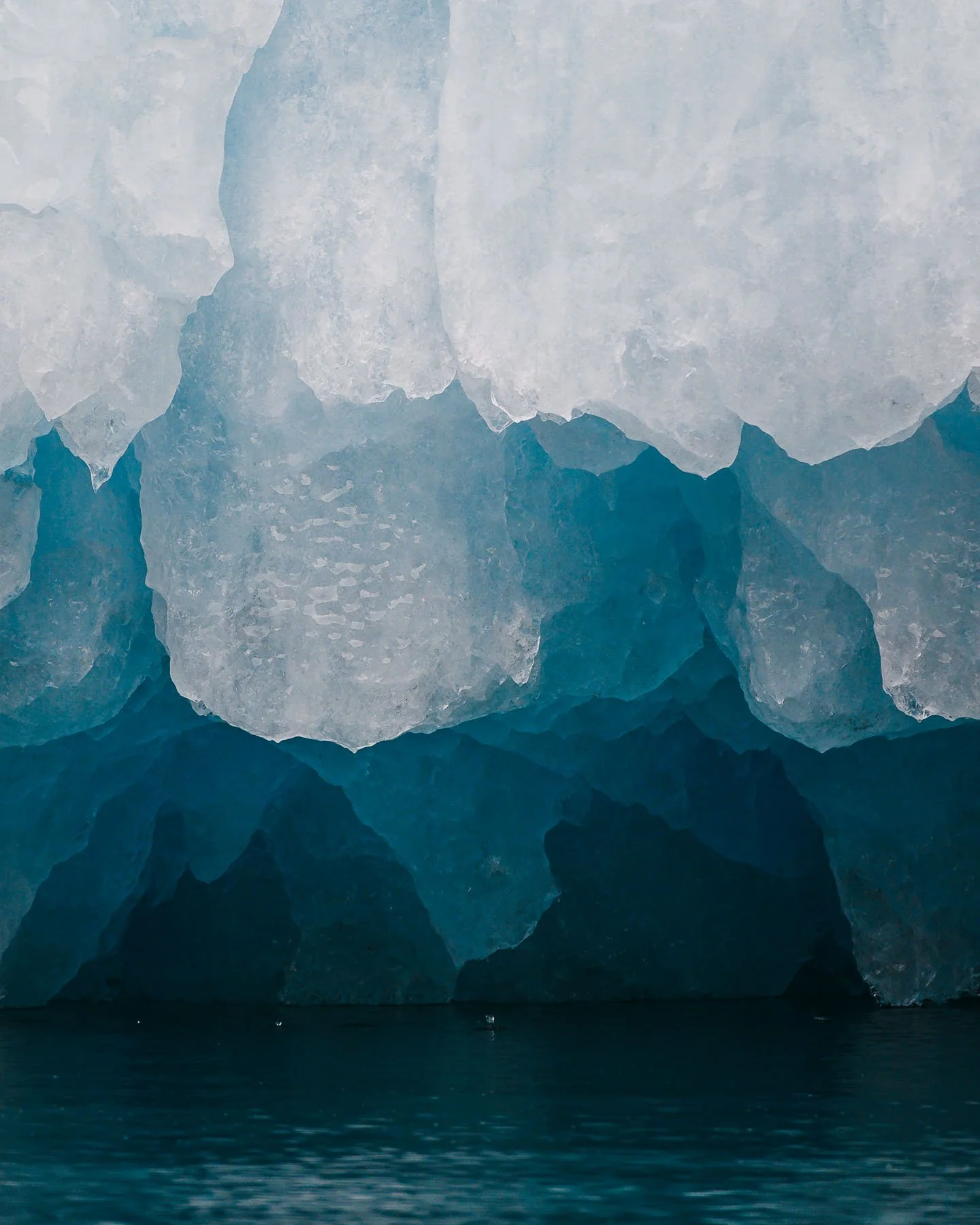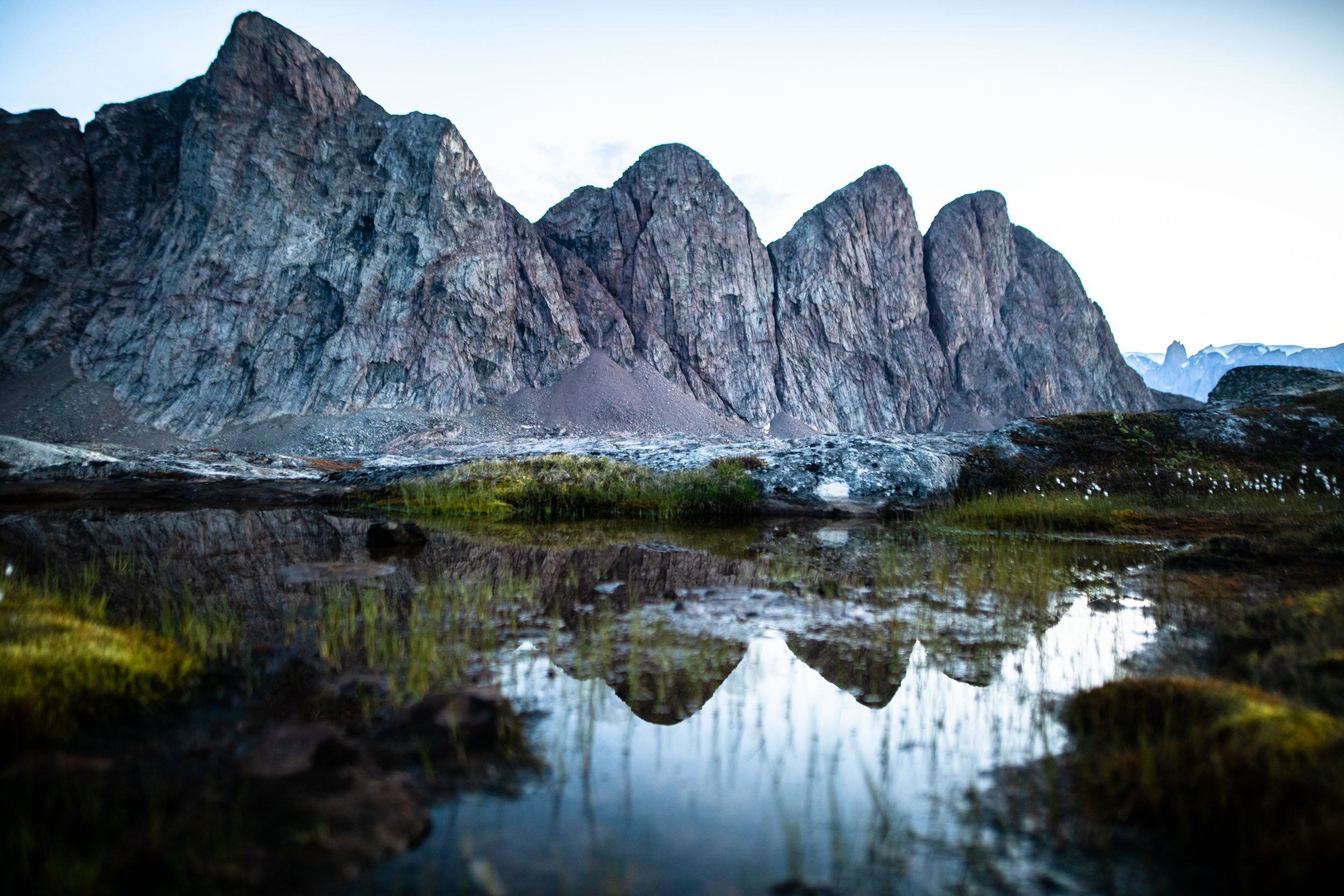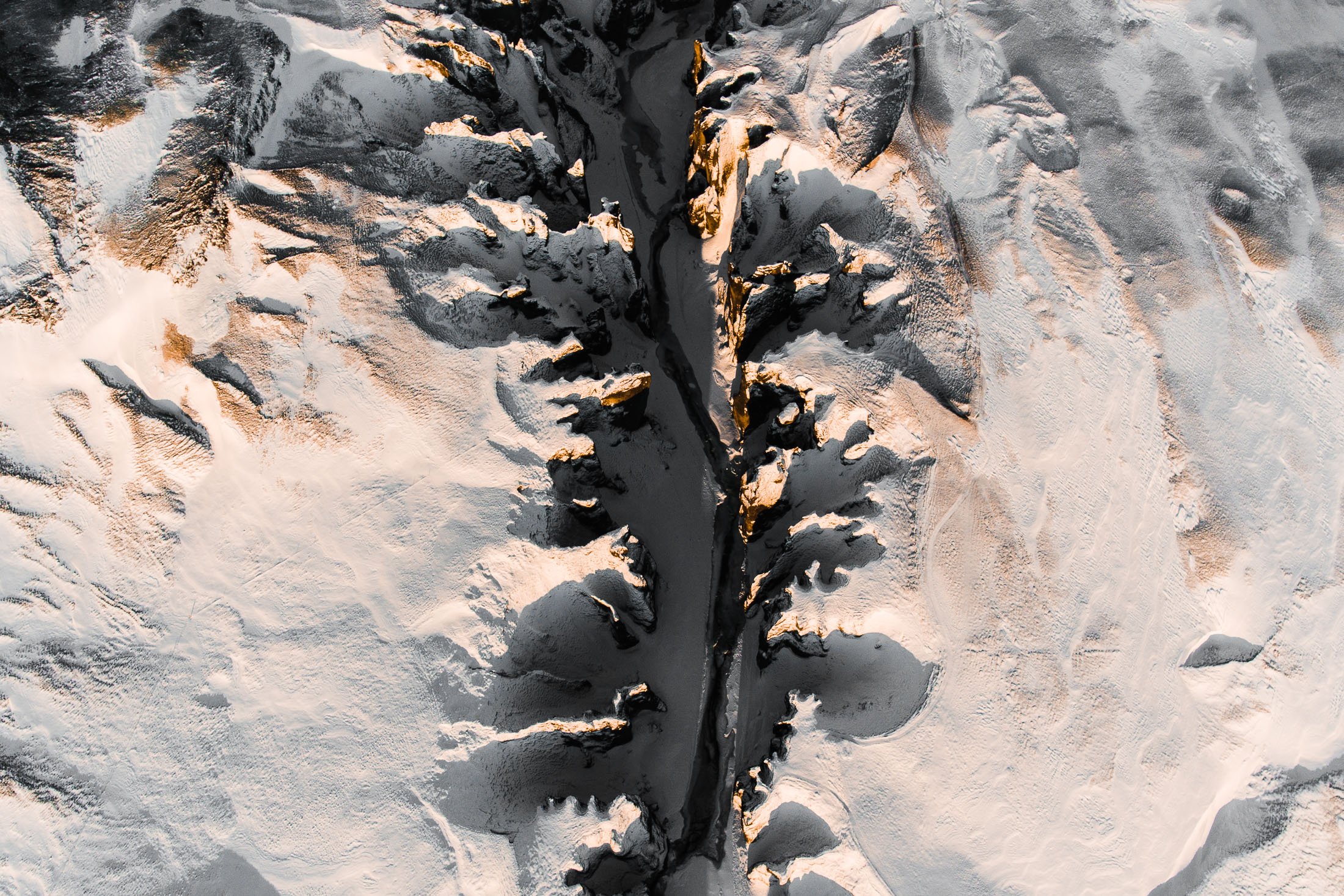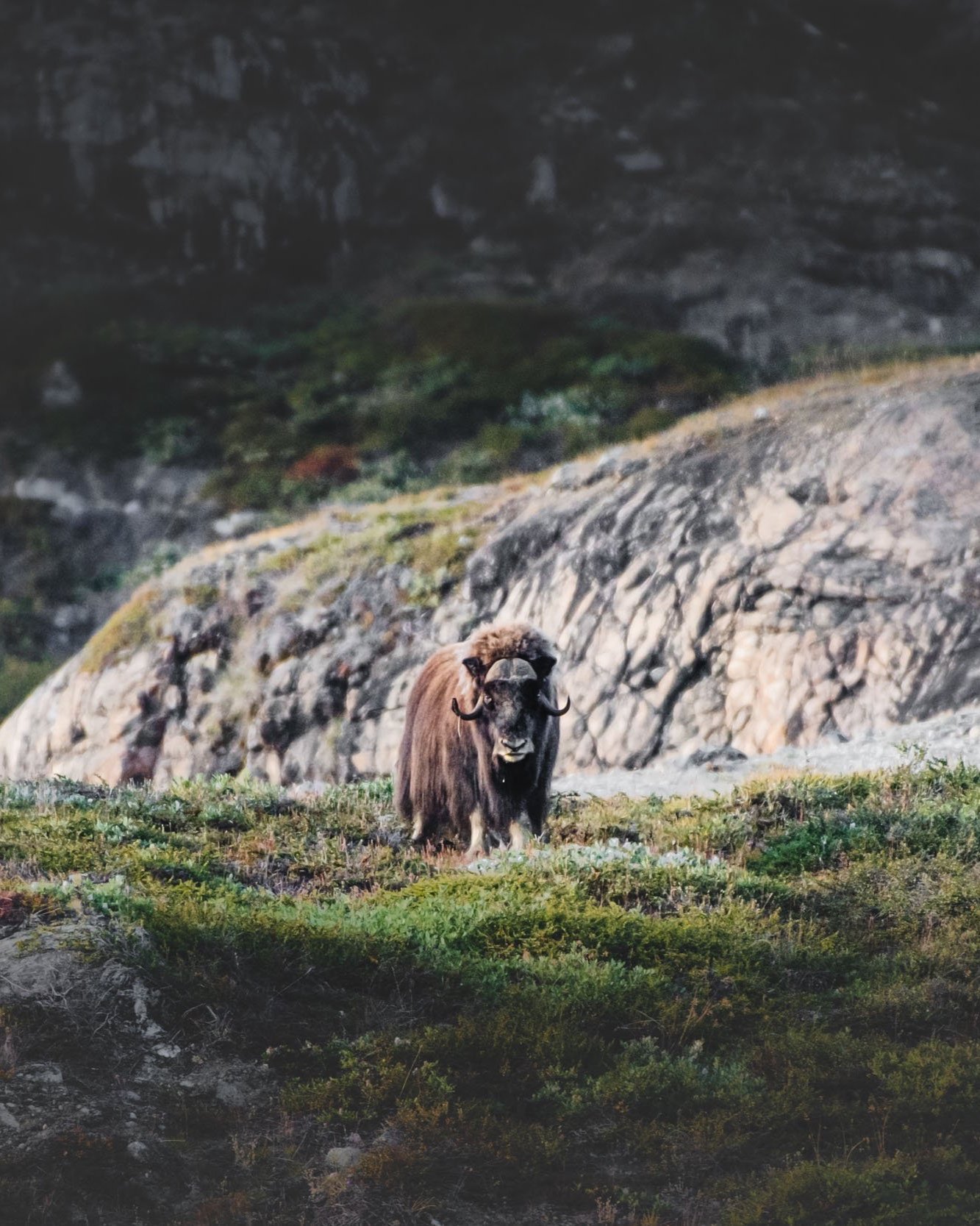Five Famous Explorers of the Arctic and Antarctic
If you knew nothing about famous explorers and their famous exploration, where would you and where could you get started on your journey to learn more about famous explorers and their faooud explorations? The answer is clear: here! Our blog provides a more then general overvie of four key famous explorers and more than general details about some of their key famous exploration.
Welcome to The Great Expedition Company Blog!
On the Great Expedition Blog, we cover and discuss all manner of topics, issues and things to think about when it comes to Greenland, Iceland and the polar regions (Arctic and the Antarctic). We do hope you can benefit from our expedition and travel experience in these areas and use the information found here to make choices about your future travel plans that suit you perfectly.
In the post, we will cover FIVE famous explorers and their respective famous explorations. They are:
Fridjof Nansen (1861-1930)
Roald Amundsen (1872-1928)
Captain Robert Falcon Scott (1868-1912)
Sir Ernest Shackleton (1874-1922)
Sir John Franklin (1786-1847)
For a joint scientific and geographical piece of organisation, give me Scott; for a Winter Journey, Wilson; for a dash to the Pole and nothing else, Amundsen: and if I am in the devil of a hole and want to get out of it, give me Shackleton every time - Cherry Apsley-Gerrard
For a joint scientific and geographical piece of organisation, give me Scott; for a Winter Journey, Wilson; for a dash to the Pole and nothing else, Amundsen: and if I am in the devil of a hole and want to get out of it, give me Shackleton every time - Cherry Apsley-Gerrard
In the annals of famous exploration, the Arctic and Antarctic stand as the ultimate test of human endurance and ingenuity. From the icy expanses of the Arctic to the frosty desolation, savage peaks and dry valleys of Antarctica, these frozen frontiers have lured adventurers for centuries.
So the main question is this: who were these famous explorers and what famous explorations did they undertake? Well, if you know nothing about famous polar explorers and the spirit that guided their great deeds of exploration, we think our blog about famous explorers and their famous explorations would be a great place to start.
Most fascinating in this world of famous explorers and their famous explorations of all are the extraordinary turns of events, for better or for worse they took place on these great conquests of our planet. The near misses, the strokes of good luck, the incredible misfortunes which feed these remarkable men in their unceasing quest to conquer new lands.
Let’s embark on a journey through time and space to uncover the tales of five famous explorers who braved the elements and left an indelible mark on history, and each one remarkable in their own unique way.
Sir John Franklin (1786-1847): Franklin’s Lost Expedition
The lost Franklin expedition is one of the most storied famous explorations ever. This is because the entire expedition of 127 men and their two ships, HMS Erebus and HMS Terror disappeared. Indeed, another morbid fact about this famous exploration is that more men have died looking for remnants of Franklin and his lost expedition than the original 127 men in the expedition itself!
The aim of the Franklin expedition was to find the Northwest Passage. What is the Northwest Passage and why seek out the northwest passage? The answer is both relatively simple and relatively complicated: The main objective of finding the Northwest Passage was to discover a navigable route through the Arctic waters of North America that would connect the Atlantic and Pacific Oceans. European explorers sought this passage for centuries as a potential shortcut for trade routes to Asia, which would bypass the long and hazardous journey around the southern tip of South America or through the Indian Ocean. All of this before the construction of the Panama Canal.
Sir John Franklin, shortly before setting sail on his ill-fated journey
By finding a viable Northwest Passage, explorers hoped to gain notoriety and establish a more efficient and lucrative trade route, thereby gaining economic advantage and prestige for their home countries. The discovery of the Northwest Passage was seen as a significant geographical and navigational achievement, offering the promise of new territories and resources for colonization and expansion.
However, the Northwest Passage proved elusive due to its treacherous conditions, including ice-covered waters, narrow channels, and shifting sea ice. Many expeditions in search of the Northwest Passage ended in failure or disaster, as explorers encountered harsh Arctic conditions, navigational challenges, and the risk of becoming ice-bound. Both ships of the Franklin Expedition were icebound for more than one year. By this point 20 % of the crew including Franklin himself had already died, then it is known that the vessels were abandoned as the remaining survivors attempted to head for the Canadian mainland.
What Happened to Franklin’s Famous Exploration of the Northwest Passage?
The key question about this famous exploration is this: what happened? If only it were that simple. It is known that both vessels became trapped in the ice. They had the latest technology for the time and three winters worth of food. A leading theory about the demise of the crew is that the tinned food that carried with them in their stores was contaminated with lead from the lead soldering used to seal the tins.
The only direct evidence about what happened to the expedition from the expedition itself is the Victory Point Note. Everything else has been deduced or gleaned from evidence gathered from the area around the ships.
The Victory Point Note. Thinly written evidence of what happened to Franklins lost expedition.
A Transcript of the Victory Point Note reads:
28 of May 1847
H.M.S.hips Erebus and Terror Wintered in the Ice in Lat. 70°5’N Long. 98°23’W Having wintered in 1846-7 [sic] at Beechey Island in Lat 74°43’28’’N Long 91°39’15’’W
After having ascended Wellington Channel to Lat 77° and returned by the West side of Cornwallis Island.
Sir John Franklin commanding the Expedition.
All well
Party consisting of 2 Officers and 6 Men left the ships on Monday 24th May 1847.
[signed] Gm. Gore, Lieut.
[signed] Chas. F. DesVoeux, Mate
25th April 1848
HMShips Terror and Erebus were deserted on the 22nd April 5 leagues NNW of this having been beset since 12th Sept 1846.
The officers and crews consisting of 105 souls under the command of Captain F. R. M. Crozier landed here — in Lat. 69°37’42’’ Long. 98°41’
This paper was found by Lt. Irving under the cairn supposed to have been built by Sir James Ross in 1831 — 4 miles to the Northward — where it had been deposited by the late Commander Gore in May June 1847.
Sir James Ross’ pillar has not however been found and the paper has been transferred to this position which is that in which Sir J. Ross’ pillar was erected.
Sir John Franklin died on the 11th of June 1847 and the total loss by deaths in the Expedition has been to this date 9 officers and 15 men.
[signed] F. R. M. Crozier Captain & Senior Offr
And start on tomorrow 26th for Backs Fish River
[signed] James Fitzjames Captain HMS Erebus
Franklin's men spent their first winter of 1845–46 on Beechey Island, where three crew members died and were buried. After travelling down Peel Sound through the summer of 1846, Terror and Erebus became trapped in ice off King William Island in September 1846 and are thought never to have sailed again. According to the second part of the Victory Point Note dated 25 April 1848 and signed by James Fitzjames (Captain of HMS Erebus) and Francis Crozier (second in command to John Franklin) , the crew had wintered off King William Island in 1846–47 and 1847–48 and Franklin had died on 11 June 1847.
The remaining crew had abandoned the ships and planned to walk over the island and across the sea ice towards the Back River on the Canadian mainland, beginning on 26 April 1848. In addition to Franklin, eight further officers and 15 men had also died by this point. Numerous relief expeditions were commissioned by the admiralty, but the admiralty officially stopped looking for the lost Franklin expedition in 1854. More expeditions continued to search for the th truth behind the demise of the Franklin expedition. These expeditions to investigate the fate of the original expedition gathered large amounts of spoken Inuit testimony. These verbal sources provided valuable additional information, including the discovery of various remains.
HMS Erebus and HMS Terror setting sail
In the years up to 1878, there were a total of 19 arctic expeditions to discover what happened to the original Franklin arctic expedition. Expeditions continued well into the 20th century, each one teasing more clues out of the debris and the remnants that lay strewn over the wastes of the Canadian Arctic.
Expeditions continued well into the 20th century, but it was not until the early 21st century, that the wrecks of the Erebus and the Terror were found, in 2014 and 2016 respectively. HMS Erebus was discovered by the Canadian Victoria Strait expedition in Wilmot and Crampton Bay and the wreck of HMS Terror was discovered by the Arctic Research Foundation in Terror Bay, off the southwest coast of King William Island at a depth of 69–79 ft (21–24 m).
Archeological reports, tissue analysis from exhumations and other evidence from the remains of members of the expedition indicate that a combination of cold, starvation and disease including scurvy, pneumonia and tuberculosis, all made worse by lead poisoning, killed everyone in the Franklin expedition. Ironically, the it was the failure of the Franklin expedition, and their subsequent disappearance which led to the mapping of several thousand miles of Canadian Arctic coastline, a much greater amount of coastline than would have been mapped if the expedition had returned safely. The failure of the Franklin expedition quelled the desire of the Royal Navy for future Arctic expeditions for quite some time until the Nares expedition of 1875-1876.
Fridtjof Nansen (1861-1930): Arctic
Scientist, famous explorer, diplomat and humanitarian. In 1888, Nansen made his first foray into polar exploration with the first crossing of the Greenland Ice Cap. Leading a small team of men, he traversed the treacherous interior of the island, covering over 300 miles on skis and sledges. The expedition was a resounding success, earning Nansen widespread acclaim and laying the groundwork for his future famous explorations.
Fridjof Nansen
Nansen’s most famous exploration was the Fram Expedition. The Fram Expedition was an ingenious mixture of sailing, drifting (in the pack ice) and marching (on ski and sledge). The expedition team intentionally trapped their ship in the Arctic ice to drift with the currents on the thin crust of the Arctic ice. The Fram Expediton absolutely smashed the previous Furthest North red, held by Greely at 83°24′S. On 8 January 1895, Fram’s position was 83°34′N.
Though the expedition team did not reach the North Pole as they had hoped, Nansen's innovative approach revolutionised polar exploration by bringing fresh thinking to the methods of polar exploration. Nansen and his crew ventured farther north than any previous explorers, reaching an unprecedented latitude of 86°13.6′N, an astonishing achievement for the period.
Nansen was not just a famous explorer. He was also instrumental in negotiating the independence of Norway from Sweden, served as Norway’s first ambassador to the United Kingdom, created the “Nansen Passport” which was a special passport for stateless persons and spearheaded the negotiations which led to the signing of the Svalbard Treaty, also known as the Spitsbergen Treaty.
Fridjof nansen’s Fram Expedition
Nansen's influence and expertise were instrumental in shaping the treaty's terms and facilitating international cooperation over the archipelago of Svalbard. The Spitsbergen Treaty, signed in 1920, established Svalbard as a demilitarized zone under Norwegian sovereignty but with certain provisions for international governance and access. Nansen's involvement stemmed from his longstanding commitment to Arctic exploration and his belief in the importance of international cooperation in the polar regions.
In addition to all of this, Nansen also earned the Nobel Peace Prize in 1922 for his work on the humanitarian crisis in the wake of World War I and the creation of the abovementioned ‘Nansen Passport’ for stateless persons which was recognised by up to 50 countries at its peak.
Roald Amundsen (1872-1928): Arctic and Antarctic
A protégé of Nansen, Roald Amundsen could be said to be one of the most successful and famous explorers in the history of exploration. Having been fascinated by the trials, tribulations and subsequence diappearence of the ill-fated Franklin expedition, Amundsen would end up undertaking some of the famous (and successful) explorations in history.
Roald Amundsen in animal furs
Belgica Expedition, 1897-1899:
Amundsen's first major expedition was as First Mate on the Belgian Antarctic Expedition led by Adrien de Gerlache, after whom the Gerlache Strait in Antarctica is named. The expedition became being trapped in ice for nearly a year and they were forced to overwinter. The Belgica Expedition provided valuable scientific data about the continent, which was still largely unknown at the time.
Gjøa Expedition, 1903-1906:
Amundsen's next endeavour was the historic Gjøa Expedition, during which he successfully navigated the Northwest Passage, succeeding where his hero Franklin had failed and countless others over the preeceding centuries. Sailing aboard the Gjøa, a small sloop (a one-masted sailing boat with a mainsail and jib (another type of sail) rigged fore (front) and aft (behind)), Amundsen and his crew became the first to traverse the Northwest Passage, mapping hitherto uncharted waters, making significant contributions to geographical knowledge.
1910-1912: South Pole Expedition:
How do you achieve eternal status in the world of exploration? Be the first man at the South Pole! Amundsen's most famous exploration was his successful journey to the South Pole. After initially signalling his intent to head north, Amundsen went South with Nansen’s trusty Fram instead. There are many reasons why he did this, but one of them was he was most certainly concerned that somebody would try to stop him, since it as customary at the time to allow the first man who had signalled his intent to “try” and return first, before a new attempt was made. There was a similar controversy between Scott and Shackleton and the latter’s attempt on the South Pole after the Discovery Expedition.
Departing from Norway in 1910, Amundsen and his team reached the pole on December 14, 1911, beating rival Robert Falcon Scott's British expedition by 35 days. The achievement cemented Amundsen's place in history as the first person to reach the South Pole. Travelling by dog and by ski and choosing a different route from previous attempts to reach the South Pole via the Axel Heiburg glacier rather than via McMurdo and the Beardmore Glacier as Shackleton and Scott had attempted, Amundsen pioneering an entirely new route to the pole which was actually 100 km closer. After spending three days at the Pole, they returning to Fram in the Bay of Whales.
Amundsen’s Journey was all the more astonishing because he had pioneered the entire route without benefitting from any reconnaissance from a previous expedition to inform the next one. Therefore, it was impossible for anyone to claim that he had achieved his goal via any ungentlemanly means, as was claimed by Shackelton when he used McMurdo Sound after promising Scott that he would not.
Roald Amundsen at the geographic South Pole
Robert Falcon Scott ( 1868-1912): Antarctic
Captain Robert Falcon Scott
Robert Falcon Scott, a British Royal Navy officer and polar explorer, led two expeditions to the Antarctic, the latter resulted in his death. Scott was the second man at the Geographical South Pole, along with the rest of his polar party of 4 others. Scott’s name goes down in the history books as one of the greatest polar explorers, for he pioneered the way to the South Pole.
Discovery Expedition “British National Antarctic Expedition” (1901-1904)
Scott's first major Antarctic expedition was the Discovery Expedition, which aimed to explore the unknown regions of the Antarctic continent, as well as reach the South Pole.
Discovery Expedition Souther Journey Party: left to right Shackleton, Scott and Wilson
Scott served as the expedition's leader, and although the primary goal of reaching the South Pole remained unachieved, the expedition made significant scientific discoveries and mapped large portions of the continent, reaching a Furthest South of 82°N before turning back and falling on significant hardship. Ernest Shackleton was a member of Scott’s party that headed towards the South Pole, but fell very ill and was invalided home on the relief ship Morning. This started a rivalry between the two polar Explorers that would colour their relationship for the rest of Scott’s Life. The Discovery expedition also pioneered territory in a westward direction. They discovered the polar plateau, became the first men to travel on it and also discovered two snow-free “dry valleys”, which we now know are the driest places on earth where it has not rained for 2 million years.
Terra Nova Expedition “British Antarctic Expedition” (1910-1913)
Scott's largest and most famous expedition, the Terra Nova Expedition. In many ways it was the official Royal Geographical Society’s official expedition, and was launched with the goal of being the first to reach the geographic South Pole, amongst many other goals and objectives. Departing in 1910, Scott and his team arrived in Antarctica the following year. On January 17, 1912, they reached the South Pole, only to discover that Norwegian explorer Roald Amundsen had beaten them by 35 days. Tragically, Scott and his entire party perished on the return journey, succumbing to exhaustion, starvation, and exposure.
One of the saddest things about the fate of Scott’s polar party was that their ordeal was laid bare for all in the diaries and journals they left behind.
Scott’s final words to the British public were:
Captain Scott’s Polar Party at the South Pole with Amundsen’s flag in the background
““We took risks, we knew we took them; things have come out against us, and therefore we have no cause for complaint, but bow to the will of Providence, determined still to do our best to the last ... Had we lived, I should have had a tale to tell of the hardihood, endurance, and courage of my companions which would have stirred the heart of every Englishman. These rough notes and our dead bodies must tell the tale, but surely, surely, a great rich country like ours will see that those who are dependent on us are properly provided for””
These revelations removed the expedition from the fog of uncertainty that surrounds the Franklin Expedition and helped to create the legend of Scott as National Hero. Despite the tragic outcome of his final expedition, Scott's legacy endures as a symbol of courage, determination, and the quest for discovery in the harshest environments on Earth. Scott’s epitaph, a quotation from Alfred Lord Tennyson’s Ulysses reads “to seek, to strive to find and not to yield”.
Sir Ernest Shackleton (1874-1922):
Ernest Shackleton after the “Nimrod” expedition, 1909
Last but not least on our list of famous explorers and their famous explorations, we have Sir Ernest Shackleton, A British explorer known for his legendary Antarctic expeditions, Sir Ernest Shackleton led three major famous explorations of the Southern Continent.
Discovery Expedition “British National Antarctic Expedition” (1901-1904)
The Discovery Expedition, led by Robert Falcon Scott, marked the first major British scientific expedition to Antarctica at the turn of the 20th century. Departing from England in 1901 aboard the ship Discovery, the expedition aimed to conduct scientific research and exploration in the uncharted territories of the Antarctic continent.
Ernest Shackleton played a big role in the Discovery Expedition as junior officer and as one of three of the southern party. During the expedition, the Discovery crew made several significant discoveries and achievements. They conducted geological surveys, magnetic observations, and meteorological research, providing valuable data that contributed to our understanding of Antarctica, reaching a Furthest South of 82°S.
On the journey to the South Pole, Shackleton suffered from bad health and for some sections walked beside the sledges and in some cases was carried on a sledge by the other members of the party. Shackleton was invalided out on the the relief ship Morning when it came in the following spring. Scott made some comments about Shackleton’s health in his 1905 book about the expedition which created a standing rivalry between them.
“What Nansen is to the North, Shackleton is to the South”
Nimrod Expedition “British Antarctic Expedition” (1907-1909)
Shackleton’s Nimrod Expedition, privately and hastily organised (in 10 months) and without the backing of the Royal Geographical society (who were saving their backing for Scott) was a tremendously successful expedition and Shackleton was welcomed back as a hero.
The most notable achievements of the expedition were achieveing a furthest south of 88° 23' S”, 97 miles from the Geographic South Pole, improving on Scott’s furthest south by a whole 6 degrees of latitude, and showing the way up the beardmore Glacier. This expedition was also the first summit of Mt. Erebus, the active volcano on Antarctica and the discovery of the South Magnetic Pole at 72° 15' S, 155° 16' E 17 January 1909
Shackleton and his polar party made up of Frank Wild, Marshall and Adams came very close indeed to perishing on their return journey. They were lucky with the weather, one very bad spell and they would likely not have made it. The return journey was also a race against tie, since Nimrod was due to leave north, and missing the ship would have meant overwintering int eh Antarctic and waiting for relief, and outcome to be avoided at all costs.
“The main results of the British Antarctic Expedition of 1907, under my command are as follows: we reached a point within 97 geographical miles of the South Pole, the only thing that stopped us from reaching the actual point was fifty pounds of food. Another party reached for the first time the south magnetic pole and another party reached the summit of the great active volcano mount Erebus. We made many interesting geological and scientific discoveries and had many narrow escapes throughout the whole time. A typical narrow escape was when we were going up the great flat here towards the pole. We were marching along, three of us harnessed to one sled in very bad light. Our last pony was being led by another man with the […] all of a sudden, we heard the shout of help form the man behind, we looked around and saw him supporting himself by his elbows on the edge of a chasm. There was no sign of the pony. The sledge was jammed with its bow in the crevasse. We rushed back to help the man out and then haul the sledge down. Then we laid down to have a look but nothing but a black draft was below. The pony may have fallen 1000 or 1500 feet. Anyhow, he’s gone. ”
Shackleton with his South Party after their attempt to reach the geographic South Pole. Let tot right Wild, Shackleton, Marshall and Adams
Endurance Expedition “Imperial Trans-Antarctic Expedition” (1914-1917)
After Roald Amundsen made it to he south pole with dogs and skis, what was left to explore? Rather a lot is the answer, but what was the great deed that still remained? For Shackleton, what remained was a crossing of the Antarctic continent, a feat which had never been attempted.
Endurance crushed by the ice
The plan for the Imperial Trans-Antarctica was that there would be two parties: the Wedell Sea party and the Ross Sea party. The Weddell Sea party would lay depots and cross to the South Pole and the Ross Sea Party would lay depots on the polar plateau for the Weddell Sea party once the reached the South Pole in order to allow them to continue their journey.
However, the Endurance Expedition of 1914-1917 was ill-fated and never really started in ernest: The Endurance became ice-bound a few miles short of their Weddell Sea landing site. After drifting in the pack ice of the Weddell Sea for nearly 800 miles, the Endurance was crushed and sank, and the men had to use the 3 lifeboats of the Endurance to row and sail to Elephant Island, a desolate pinnacle of rock in the southern ocean. Indeed, one might say that the real story of the Endurance has now become the greatest real life survival story ever told.
Leaving behind 23 men on Elephant Island in order to get help, Shackleton, Frank Worsely, Tom Crean, John Vincent and Timothy McCarthy set out in the James Caird, the best lifeboat of the three, in an 800 mile small open boat journey is widely regarded by historians as “the greatest small bat journey ever completed. The Endurance expedition has gone down in history as one of the most famous explorations or journeys ever undertaken, and is a tale that has been told and re-told and even re-traced in replicas of the James Caird.
Having miraculously arrived at South Georgia Island, they had arrived on the far side; the final stage of the expedition was to be a crossing of South Georgia, a mountainous and glaciated mountainscpape, with what can only be politely described as inadequate equipment.
The most remarkable achievement of the expedition was that, despite all of the hardship suffered, not a single man died. All of the Endurance party survived.
The Next Polar Explorer is YOU!
Mercifully, times have changes since the days of famous explorers Franklin, Nansen, Amundsen, Scott and Shackleton and the polar regions have never been more accessible. Modern vessels, satellite communication technology and GPS remove many of the hazards with which the famous explorers were beset.
Rest assured, there is still plenty of desolation and serenity in both the Arctic and the Antarctic. The Great Expedition COmpany offers YOU the chance to seek out your own exploration and get a taste of the adventure on the beautiful sailboats that we use indulge our predilections for the polar regions.
Arctic vs Antarctic
Discussing theArctic vs Antarctic means that we hav to find the essential different between two worlds that are, quite literally, poles apart. Arctic vs Antarctic is about differences in wildlife, temperature, terrain and also a huge number of human factors. Discover what separates arctic vs antarctic here in our new blog.
Welcome to The Great Expedition Company Blog!
Cruising thrice fields of the Weddell Sea, Antarctica.
On the Great Expedition Blog, we cover and discuss all manner of topics, issues and things to think about when it comes to Greenland, Iceland and the polar regions (Arctic and the Antarctic). We do hope you can benefit from our expedition and travel experience in these areas and use the information found here to make choices about your future travel plans that suit you perfectly.
Introduction to The Arctic vs Antarctic
When it comes to polar exploration, the Arctic and Antarctic stand as contrasting canvases of icy magnificence. Believe it or not, there are several different ways to compare the Arctic vs Antarctic, and we intend to unpack them here. From wildlife to landscapes, to geography and human habitation, each polar realm unfolds in unique ways, but still with plenty in common. Here, we break these differences between the Arctic vs Antarctic as follow
Arctic vs Antarctica? You tell us!
Geographical and geomorphological differences between the Arctic vs Antarctic
Temperature differences between the Arctic vs Antarctic
Wildlife distribution and variation between the Arctic vs Antarctic
Comparing the ice the Arctic vs Antarctic
Human footprints between between the Arctic vs Antarctic
Access and Adventure in the Arctic vs Antarctic
Arctic vs Antarctic in one sentence, TLDR
If you’re looking for a TLDR (too long, didn’t read) for our breakdown of the Arctic vs Antarctic, here it is: the Antarctic is (much colder) colder, (much) higher, (much) icier, has no plants and is less diverse in terms of wildlife and has no history of human habitation before the 20th century.
Geographical and Geomorphological differences between The Arctic vs Antarctic Where Polar Worlds Collide
In the Arctic vs Antarctic geographical comparison, it's a tale of positions on the planet. The Arctic, an ocean surrounded by continents, plays host to polar bears and the mesmerising Northern Lights. Meanwhile, the Antarctic, a continent surrounded by the Southern Lights (aurora Australis), penguins, colossal ice shelves and tabular icebergs, the largest in the world.
The geomorphological differences between The Arctic vs Antarctic are considerable.
Sunset over the Weddell Sea, Antarctica
It is often not readily appreciated that while the Arctic and Antarctic both ‘start’ at sea level, the Antarctic climbs to incredible heights, where air is thin indeed.
The Antarctic rises precipitously, from sea levels where the glaciers Cale off, to the great ice Ronne, Ross and Larsen ice shelves which are hundreds of feet higher, over the Transantarctic mountains and up to the polar plateau, with the geographical South Pole itself being 1235km from the closest coastline and is situated high on the polar plateau (height 2800 m). Much of that is ice. The thickest and largest ice sheet on earth.
The North Pole, the heart of the Arctic, lies barely a foot above sea level, itself surrounded by hundreds of miles of such ice, it is also high unstable and also travelling. There are of course, incredible peaks in the Arctic, but none forma continuous range as do the Transantarctic mountain range, and the tallest peak in Greenland, Mt Gunnbjorn lies at 3,694m (12,119 ft), and is the tallest peak in the Arctic Circle. The tallest peak in Antarctica is Mt Vinson, which lies at 4,892m (16,050 ft). This would make Mount Vinson the tallest peak in the Antarctic Circle too.
Temperatures differences between Arctic vs Antarctic: which is colder?
Both regions boast bone-chilling temperatures, but the Arctic tends to be much more mild than the Antarctic, with winter temperatures hovering around -40°F/-40°C (-40 is the same for both Farenheit and Celcius!). Although that is very cold by any measure, it is positively warm compared to Antarctic desolation, where temperatures have been recorded to plummet to a staggering -128.6°F, the coldest temperature ever recorded on the Planet, at the Vostok research station in the 1980s. The polar plateau where the geographical South Pole lies is a more or less constant -25°C. Even still, many Antarctic expedition have recorded considerable temperature variaitons which are reflected in ‘the going” of the skis and the snow under them. Add some wind chill to this, and you will have the harshest and most inhospitable conditions on earth, turning skin frostbitten in a few seconds.
Wildlife distribution and variation between the Arctic vs Antarctic
Here again, there are differences and similarities. In the Arctic vs Antarctic wildlife, it's a toss-up of charismatic species of megafauna. In the Arctic, you can see:
Polar Bear (largest terrestrial land predator)
Arctic Fox
Muskox
Reindeer
Various Seal Species
Whales & dolphins (many of which migrate to The Antarctic)
Raptors such as white-tailed sea eagles, owls and falcons
Migratory birds (Arctic Terns, Kittiwakes, loons and buntings to name a few.
In Antarctica, we have overlapping species of megafauna, but also entirely different ones.
In Antarctic, you can see:
Penguins (Gentoo, Adelie, Chinstrap, Emperor)
Seals
Leopard seal
Crabeater seal
Weddell Seal
Ross Seal
Antarctic Fur Seal
Whales and dolphins
8 species of Albatross in the Antarctic and sub-Antarctic
Many other bird species such as Skuas, Petrels and the Antarctic Tern, to name a few.
Plant (photosynthetic) life distribution and variation between Arctic vs antarctic
Despite being terrestrially very inhospitable, when it comes to the Arctic vs Antarctic, the Arctic is a veritable rainforest compared to the Antarctic. The Arctic plays host to no less than 1,700 species in the Arctic and the Arctic Tundra. Some of the more common species of plants found in the arctic
In the Antarctic, there are no trees or shrubs of any kind, and only two species of flowering plants: Antarctic hair grass (Deschampsia antarctica) and Antarctic pearlwort (Colobanthus quitensis).
But there are 300 species of lichens in Antarctica, which are not plants! Lichens do not produce seeds and are a symbiosis of two organisms: fungus and photosynthetic algae.
Comparing the Ice in The Arctic vs Antarctic: The Grandeur of Frozen Landscapes
Is ice ever really just ice? All ice is of course frozen water, thanks captain obvious, but somehow despite this bare bones fact, the outcomes of ice in Arctic vs Antarctic end up being very, very different.
When it comes to ice, both regions are frozen wonders, but their icy compositions differ. The Arctic showcases vast sea ice, floating atop its polar ocean.
The outlet tongues giving off these icebergs in the Arctic are smaller than in the Antarctic, and perhaps because of this the shapes and structures of the ice are very different. Ice in the Arctic takes on incredible, fantastical and enormous forms, spikes and arches, while Antarctica presents colossal ice shelves, one of the key phenomena are the tabular icebergs that break off of the great ice shalves: those that can only be formed form the mass of a veritable continent of ice pressing outwards and downwards onto the oceans below.
Arctic vs Antarctic: Size Matters
Here, at the Antarctic wins, hands down. The largest iceberg in the world at the of recent times was A23a, which 400m/1312 ft high and 4,000 square km (1,544 sq miles). That is about 3 times the size of New York City. There are no ice sheets in the Arctic with enough ocean-facing ice that are capable of creating icebergs that enourmous.
Contrasting Human Footprint between Arctic vs Antarctic: Indigenous Wisdom vs. Scientific Endeavor
In the Arctic vs Antarctic comparison, the human story unfolds very differently. Indigenous communities have long inhabited the Arctic, blending tradition with the eternal challenges of the region for thousands of years, and in different waves of migrations, too. Migrations occurred in an easterly direction from Canada towards Greenland. The great waves of migration to Greenland were called Independence I from 2500 -1750 BC, Saqqaq culture from 2400BC through to 400 BC, Independence II from 800BC to 0AD, the Dorset 2 from 8th-9th Century AD and finally the Thule people, the last wave of migration starting around 1200 AD of whom it is widely thought now according to the best available evidence the modern Inuit are the modern descendants.
IIttoqqortoormiit, the place with the big houses, East Greenland.
Antarctica, by contrast, has no prior evidence of human habitation. Antarctica is devoid of native and subisisting human populations, and serves instead as base canvas for scientific exploration, with many countries (20 to be precise) now operating Antartctic research stations, 70 in total, although the USA McMurdo station is by far the largest, with a summer population of 1200 people and a winter population of about 200.
The discovery of Antarctica in the 8th century marked a heroic era of exploration as intrepid adventurers sought to unveil the mysteries of the icy continent.
The first crossing of the Antarctic Circle took place under Captain Cook’s second voyage, 1773. Fabian Gottlieb von Bellingshausen was the first person to sight Antarctica The 19th-century expeditions, notably those led by James Clark Ross and his discovery of the Ross Ice Shelf in the mid-1800s, contributed significant geographical knowledge. The first person to sight Antarctica was Nathaniel Palmer, on 17 November 1820, and the first landing was just about a year later when English-born American, Captain John David, another sealer, set foot on the ice. Many decades later in 1898-99, The Belgica expedition led by Adrien de Gerlache became the first vessel to overwinter in the Antarctic after becoming trapped in ice.
Access and Adventure: From Northern Lights to Antarctic Expeditions
Accessibility defines the Arctic's appeal, drawing travelers to witness the Northern Lights, navigate icy fjords, and encounter polar bears. Also, there are million os people that live in the Arctic, making the Arctic considerably halted. Antarctica, with its remoteness and inhospitable conditions, becomes the ultimate challenge for adventurers seeking the epitome of polar exploration precisely because, aside from a few scientists, it is uninhabitable and with some of the most strict environmental regulations in the world preventing any form of traditional human settlement.
Northern Lights over Schooner Opal, Northeast Greenland
The Arctic vs Antarctic: summarising Polar Extremes
Whichever way you look at it, the Arctic vs Antarctic make up the true extremes of our planet. The Arctic vs Antarctic saga compares the imagination with each with its frozen allure. Whether you're yearning fro see a polar bear in the wild or a waddle around with thousands of penguins, the Arctic and Antarctic stand as distinct polar realms, beckoning the intrepid traveler to explore the ends of the Earth on Great Expeditions conceived but as yet unrealised.
In general, with the Arctic being the easiest of the two polar regions to access, our top tip would be to start by visiting the Arctic, and then form there you would be well positioned to see for yourself just how the Arctic vs Antarctic could play out. The Artic will be a fantastic onvas against which to compare your future antarctic experience.
We wish you a Great Expedition, in whatever you decide to do or go.
Chinstrap Penguin chilling out, Antarctica.
The Arctic Explorer's Guide to the Arctic Circle
The Great Expedition Company offers a comprehensive Arctic Explorer's Guide to the Arctic Circle. This blog answers all of your basic questions about the Arctic Circle. The Arctic Circle really is a top adventure travel destination with so many astounding things to see and do. Read and learn all about your Arctic Circle experience and travel possibilies.
Map of the Arctic Circle
Welcome to The Great Expedition Company Blog!
In the Great Expedition Blog, we cover and discuss all manner of topics, issues and things to think about when it comes to Greenland, Iceland and the polar regions (Arctic and the Antarctic). We do hope you can benefit from our expedition and travel experience in these areas and use the information found here to make choices about your future travel plans that suit you perfectly.
Introduction:
Hello to you Great Expeditioners! You've just stumbled across our ultimate guide to the Arctic Circle. Join us on a journey to the Arctic Circle, where the icebergs are colossal, the Northern Lights are dancing and adventure awaits!
What will you see and learn here? Hopefully, a lot of things you didn’t know about the Arctic Circle, right from the basics such as:
A polar bear rests on a green island in summer in Greenland.
What is the Arctic Circle?
Why visit the Arctic Circle?
How is the Arctic Circle different from Antarctic Circle?
Where should I go in the Arctic Circle?
What can I see in the Arctic Circle?
What can I do in the Arctic Circle?
When should I go to the Arctic Circle?
Why choose a small expedition ship for your next Arctic Circle
How can I get to the Arctic Circle?
What is the Arctic Circle?
The Arctic Circle is the territory where the sun either does not rise above the horizon or set below the horizon for at least one calendar day of the year. The further north you venture into the Arctic Circle, the more pronounced these effects become.
This means that, at the geographical limit limit of the Arctic Circle, the sun does not set on the summer solstice, 21st June, for the whole day and, conversely, that the sun does not rise on the winter solstice, 21st December, for that while day. The approximate limit of the Arctic Circle is about 66.5 degrees north of the equator. However, for the sake of accuracy, the 2024 the limit of the Arctic Circle lies at 66° 33' 39" north of the Equator.
Why visit the Arctic Circle?
It’s almost too obvious to say, but most people visit far-flung places because:
Something(s) new or profound to see in that place or;
Because of how far away it is from other places (isolation or;
How different it is from the other places you have visited; or finally
There’s is a person (or people) to visit there.
As far as the Arctic Circle is concerned , the main driver is going to the novelty, isolation and difference that the Arctic offers. The Arctic Circle is land of extremes, where polar bears roam freely, the icebergs take fantastical shapes, dramatic ice faces lie crooked and jagged before the quiet fjords and the air is cleaner and crispiest than you could fathom.
The Arctic Circle offers a series of nature's grand spectacles: mesmerizing Northern Lights to the serene silence of frozen icescapes. It's a unique chance to witness the raw beauty of our planet in an unparalleled and untouched way. If you want to see things you never thought were possible and feel things you never knew you could feel, then the Arctic Circle will be an awe-inspiring destination for you.
And then, there are your Arctic friends. No, we’re not talking about the polar bears, the walrus or the whales. We are speaking of course about your fellow expeditioners that you meet on board that you will travel with. All 11 others of them. They are such an important part of an Arctic experience. Its hugs in the beginning and most definitely at the end when all is said and done.
How is the Arctic different from Antarctic?
Adelie penguins in Antarctica.
While the Arctic and the Antarctic are polar opposites (see what we did there?) the Arctic Circle is an ocean surrounded by continents, while Antarctica is a continent surrounded by ocean. Both are frigid, barren wastelands: but where the polar bears and the Midnight Sun, while Antarctica has penguins in their hundreds of thousands and by far the coldest temperatures on Earth. The Antarctic is in fact much colder than the Arctic.
In the Arctic Circle, you can get yourself much further north than you could south in the Antarctic. For example, Longyearbyen, Svalbard, population 2,346 as of February 2024 lies at 78.2232° N, 15.6267° E. The equivalent latitude in the Antarctic will be thoudands of miles from the nearest person in the single harshest place on the planet. Hopefully that gives you some idea!
How is the Arctic Circle different from Antarctic Circle?
Icebergs in the Weddell Sea, Antarctica.
The Antarctic Circle begins at 66°33′49.9″ degrees South, and works in exactly the inverse of the Arctic Circle, with a commensurate turning of the seasons: The darkest day of the year wil be the summer solstice in the northern hemisphere, June 21st, and the brightest day of the year will be December 21st. In this way, the Arctic Circle is very similar to the Antarctic circle.
Consider walking across each circle; it simply isn’t possible in the Antarctic. In the Arctic however, there are plenty of places where you could easily walk into and out of the Arctic. This is because the Arctic is much more populated than the Antarctic.
What can I see in the Arctic Circle?
The Arctic is a wildlife extravaganza! From polar bears to seals, whales, puffins and walrus, it's a nature lover's paradise. And don't forget the Northern Lights, a celestial symphony of colors that turns the sky into a canvas of cosmic art.
Where should I go in the Arctic Circle?
Regarding the Arctic Circle, there are different lines of approach.
Where to go: The Nordics
Sweden, Finland and Norway all have some proportion of their territory in the Arctic. this is a great way to get into the Arctic and make your first steps at exploration. The reindeer in Norway, the lonely fjords and great forests prove that the Arctic is not a total barren wasteland. The deeper parts of Finnish lapland get very, very cold (think -40 Celsius) in the depths of winter, and are not for the faint hearted.
And then there’s Iceland. On the island of Grímsey, a tiny island that is a three hour boat ride from the northern shores of the mainland you will find the only place in Iceland which is habituated and part of the Arctic Circle. You can even get a certificate that says that you have interest the Arctic. Its good fun but its a bit gimmicky. Nevertheless, a fantastic initial foray in the Arctic, especially if you are already in Iceland.
Where to go: Iceland.
South coast of Iceland.
Icleand’s mainland is not in any way, we repeat, NOT in the Arctic, but it is an excellent gateway for exploring Greenland. Iceland has a lot of Arctic-like landscapes but it does not fall in the Arctic Circle. Touch down in Iceland to get a taste of the action with he various glaciers and howling winds before venturing further afield, such as to Greenland.
Where to go: Greenland.
Three Muskox in Greenland
Greenland is the Arctic canvas of your imagination: soaring peaks, the deepest fjords in the world, majestic icebergs and improbable communities dot the coastline while the Northern Lights dance high above. Polars dot the coast, feeds feed at the ice’s edge. Sometimes it all just feels like too much. Two-thirds of Greenland lies within the Arctic Circle, and Greenland’s northern extremity lies within 500 miles (800 km) of the North Pole.
Where to go: Svalbard
A Walrus in Svalbard.
The deepest depths of the Arctic lie in Svalbard, only 10 degrees of latitude away from the North Pole. Here, drink in the midnight sun where the sun set for the last time on April 26th and then not again until late September. Blazing sunshine 24 hours a day. The biggest draw to has to be the Arctic wildlife such as the polar bears (there being a population of 3000 (greater than the human population) and with millions of migratory birds, glaciers and icefalls all around us, you’re never far away from a true Arctic Circle spectacle.
What can I do in the Arctic Circle?
The Arctic offers activities as thrilling as a sled ride down an ice-covered mountain. Dog sledding, snowshoeing under the auroras, and the iconic Polar Plunge into Arctic waters are just the tip of the iceberg. The Arctic isn't just a destination; it's an adrenaline-fueled playground.
Photography/videography
Birdwatching
Zodiac cruising
Exploring the land once you get off the Zodiac
Identify and Spot wildlife
Go hang with the captain
Share tales of travels past with your new friends on board.
Delve into the on-board library
Dog sledding
Kayaking
Standup paddle boarding
Snowmobiling
Mountaineering
Glacier walking
Ice climbing
Skiiing
Polar Plunge (see our Polar Plunge Blog post)
When should I go to the Arctic Circle?
Most expedition to the Arctic will happen between June to August. It's the sweet spot when the sun's up all night, and at the shoulders edge of the season the light gets really, really spectacular. If you actively seek more challenging conditions, you can try and visit in the shoulder seasons and if you want a real challenge you can try the winter.
Why choose a small expedition ship for your Arctic Circle adventure?
Schooner Ópal with an ice arch, Greenland.
Size matters. What does “small arctic expedition” even mean really?
Well, we have a magic number: 12.
12 passengers. That’s it. It’s the key Arctic expedition number. It’s the number that allows you to get to know everyone on board. It’s the number that guarantees life long friends when all is said and done. More practically speaking, a smaller expedition ship ensures an intimate experience, cruising through narrow and shallow fjords and avoiding the "frozen traffic jam" feeling. It's like having a front-row to the finest action in the Arctic world without anyone else spoiling it, and only some great new friends to enhance it.
How can I get to the Arctic Circle?
Flying is your best bet for reaching the Arctic Circle but you can also sail in (if you have the time) which would be an adventure unto itself.
Apart from that, you can fly to Iceland (for Greenland), to Denmark (for Greenland) to Oslo or Tromsø (for Longyearbyan, Svalbard) . These are the Arctic gateway. From ther,e the harbour is your next gateway to adventure. Then, hop on a vessel that's as eager to explore the Arctic Circle as you are. It's the ultimate journey to the top of the world, where each step brings you closer to the frozen heart of the Arctic’s icy realms. Whichever angle you may take, may yout expedition be a Great Expedition.
Ice textures, Greenland.
Conclusion
We do hope you have enjoyed our one-stop Arctic shop! Did we miss anything? Is there anything you would like to know that we have not covered? Let us know in the comments and we will get back to you.
In the dance of Northern Lights and the silent symphony of Arctic ice, we bid adieu to this frozen Explorer’s guide. As you navigate your way through the icy wonders and dream of polar bears and walruses, whales and the like, may your adventures be as wild as a snowstorm and as tranquil as a polar sunrise. Until our next icy rendezvous; stay curious and let the polar spirit guide you to the ends of your next extraordinary journey. In the meantime, bye for now!
The Polar Plunge: Exploring Adventure, Health and Science
The Polar Plunge represents a daring encounter with polar extremes. The act of taking a Polar Plunge triggers a natural response known as the "cold shock response," releasing endorphins and providing a unique blend of adrenaline and euphoria. The number of people who swear by the polar plunge is increasing and its clear to see that is something of real value here.
Introduction
Welcome to The Great Expedition Company Blog!
In our Great Expedition Blog, we will cover and discuss all manner of topics, issues and things to think about when it comes to Greenland, Iceland and the polar regions (Arctic and the Antarctic). We do hope you can benefit from our expedition and travel experience in these areas and use the information found here to make choices about your future travel plans that suit you perfectly.
Photo by Erica Connolly, Greenland Expedition Passenger 2023.
What is the polar plunge?
On the face of it, it’s quite a simple thing. Human goes into cold water, and end of story. However still waters run deep: the Polar Plunge is an exhilarating adventure that involves bravely submerging oneself into icy waters, typically in the Arctic or Antarctic regions.
The Polar Plunge represents a daring encounter with polar extremes. The act of taking a Polar Plunge triggers a natural response known as the "cold shock response," releasing endorphins and providing a unique blend of adrenaline and euphoria. The number of people who swear by the polar plunge is increasing and its clear to see that is something of real value here.
Beyond its adventurous appeal, many Polar Plunge events also align with environmental and health causes (remember the ice bucket challenge? We do! More on that below), creating a meaningful connection between the daring participants and the preservation of fragile and threatened polar ecosystems.
The Allure of the Chill: Decoding the Polar Plunge
The Polar Plunge, a daring leap into icy waters, transcends a mere thrill-seeking adventure; it's a visceral connection to the raw forces of nature and the natural power of the ocean. This week, we are delving into the origins, the chilling temperatures, and the scientific underpinnings of this exhilarating endeavour.
The Arctic Invitation: Navigating the Frigid Waters
Two ingredients make the perfect Polar Plunge: you need to take a brave bold jump into some cold water AND you need to be one within the territory of one of the polar circles: that is to say, the Arctic or the Antarctic Circle, which respectively start at 66.5ºN and 66.5ºS approximately.
Participants willingly undertake the bone-chilling experience, making the Polar Plunge a thrilling rite of passage. Whether facing the frigid temperatures of the Arctic, with sea temperatures ranging from -2°C/28°F to 0°C/32°F, or the even colder waters of the Antarctic, where temperatures vary from 28°F to -10°C/14°F.
Antarctic Extremes: Brave the Icy Depths
Venturing into the Antarctic takes the Polar Plunge to even colder realms, with sea temperatures ranging from 28°F to 14°F (-2°C to -10°C). The bone-chilling conditions intensify the challenge, providing participants with a unique encounter with the frigid embrace of the southernmost waters. In Antarctica, because the water is so much colder, it is common to tie a cord around the Polar Plunge adventurer. That way, if the the adventurer should go into a cold shock and experience any side-effects, they can be pulled in to safety. This is a responsible safety precaution in extra cold waters.
Photo by Erica Connolly, Greenland Expedition Passenger 2023.
Swing, Jump or Walk: Three Different Polar Plunge Options
Above, we mentioned how you could jump into a polar plunge with a cord in case you get into trouble, but there there are actually two other ways you can also get you cold water fix which would definitely still count as a polar plunge as long as they are in the polar regions.
The swing is like the jump, but you have to remember to let go at the maximum extent of the swing. Also, once you have swung out, you will have further to go once it is time to get out of your polar plunge. The swing is definitely really, really fun but it does leave you exposed for longer.
The walk is perhaps the most piecemeal of the polar plunge options. You start at a beach and you walk in gradually at your own pace. The biggest benefit as opposed to the jump or the swing is that you can avoid getting you head or hair wet, so you would be as cold as when you do the polar plunge with a swing or a jump. The “danger” with the walk-in is that is goes you too much time to think and you may end up re-considering!
Cold Shock Response: What Does the Research Say?
The Polar Plunge is all about the Cold Shock Response. Immersing oneself in icy waters induces a surge of endorphins, creating a natural high and a sense of euphoria. This physiological reaction has been extensively studied.
By now, there is a lot of research about the Cold Shock Response, and some of this research flies in the face of what people believe about the Polar Plunge and Cold Water Immersion. For example, a lot has been said about cold water immersion as a means to hasten recovery after intensive exercise, such as High Intensity Interval Training. Research in the European Journal of Applied Physiology in 2015 by Stanley, Buchheit, and Peake has found that:
in a competitive setting or when the aim of the high-intensity training is to increase aerobic capacity (such as in the current study), cold water immersion has detrimental effects on high-intensity exercise that persist for at least 45 min. Therefore, it is advisable for athletes not to use cold water immersion if high-intensity events are separated by 45 min or less.
On the other hand, other researchers have found that Cold Water Immersion can have some very interesting and encouraging psychological effects. A fascinating article in the journal Biology led by an international team of researchers found in 2023 that:
participants felt more active, alert, attentive, proud, and inspired and less distressed and nervous after having a cold-water bath. The changes in positive emotions were associated with the coupling between brain areas involved in attention control, emotion, and self-regulation. A reduction in negative emotions did not show strong associations with changes in brain connectivity. The results indicate that short-term whole-body cold-water immersion may have integrative effects on brain functioning, contributing to the reported improvement in mood.*
In other words, polar plunge is not as good as people think for recovery from intensive exercise, although it may feel good, but it is at least as good as people think it is for its neurological, psychological, well being and mood impact. Things are looking good for the polar plunge and there does appear to be a point to this after all!
Didrik Espeland, a Louis de Weerd, b , c and James B. Mercer publish in The International Journal of Circumpolar Health. That the actual health benefits of cold water immersion are still, as of 2022, still a matter of debate. They studied a group of winter swimmers and found that:
CWI seems to reduce and/or transform body adipose tissue, as well as reduce insulin resistance and improve insulin sensitivity. This may have a protective effect against cardiovascular, obesity and other metabolic diseases and could have prophylactic health effects. Whether winter swimmers as a group are naturally healthier is unclear. Some of the studies indicate that voluntary exposure to cold water has some beneficial health effects. However, without further conclusive studies, the topic will continue to be a subject of debate.
Where Does This Leave us?
At the very least, the Polar Plunge really does seem to be good for us, it feels good when we do, and it sa really fun thing to do you find yourself in the polar regions. Thats good enough, isn’t it? The health benefits of the Polar Plunge seem to accrue after many days, but maybe that first polar plunge in Greenland, Svalbard or Antarctica is the start of a whole new thing for you. Maybe its the start of your new life of Cold Water Immersion!
The Ice Bucket challenge 10 years On: Little Brother to The Polar Plunge
Who remember the ice bucket challenge? The Ice Bucket Challenge was a viral internet phenomenon that gained widespread popularity in the summer of 2014. Participants, including celebrities and the general public, were challenged to pour a bucket of ice water over their heads, record the act, and then nominate others to do the same, all to raise awareness and funds for amyotrophic lateral sclerosis (ALS), also known as Lou Gehrig's disease.
The primary purpose of the Ice Bucket Challenge was to promote awareness about ALS, a neurodegenerative disease that affects nerve cells in the brain and spinal cord. By encouraging people to participate and share their experiences on social media, the campaign aimed to shed light on the challenges faced by ALS patients and to generate support for research and treatment efforts.
The campaign was highly successful in achieving its goals. It went viral on various social media platforms, with millions of participants globally. The ALS Association, a non-profit organization leading the fight against ALS, received a significant influx of donations, raising over $115 million during the summer of 2014. This surge in funding contributed to advancements in ALS research, increased patient support, and a broader understanding of the disease's impact.
Stages of the Polar Plunge
Photo by Erica Connolly, Greenland Expedition Passenger 2023.
Stage 1
Get in and get out. You’ve done it! Want to take your Polar Plunge further? Read on.
Stage 2
Get in and start by only staying in for 1-2 minutes and build up your time from there.
Stage 3
Extend your stay for up to 5 minutes or even longer and gradually become a Polar Plunge Master!
Your Polar Plunge Checklist
Never do it alone, always make sure somebody is watching you.
Bring a changing robe so that you can quickly remove your wet bathing suit and put on dry clothing.
Focus on your breath. Breathe slowly, stay present, and do not panic. Know that you can get out at any time.
Have some hot drinks on standby to warm up again after you’re done. Or make sure the sauna is ready, or the hot tub. They’ll do the trick just fine too!
Wear neoprene socks to keep feet warm, or rubber soled sandals so you don’t have to walk directly on cold surfaces
Make sure to bring gives or mittens. Make sure they’re waterproof if you want to submerge them as well.
A Dive into the Unknown: Facing Challenges and Rewards
Participating in a Polar Plunge demands courage, resilience, and a willingness to embrace the unknown. The challenges are real, from confronting the biting cold to overcoming the natural instincts resisting the initial shock. Or, indeed, embracing the initial shock and learning to cope in the moment. Yet, the rewards are equally tangible – a rush of endorphins, a sense of accomplishment, and a connection to the elemental forces that shape our planet.
Beneath the Surface, Beyond the Chill
The Polar Plunge, with its chilling temperatures and scientific underpinnings, is more than a daring leap into icy waters. It's a journey that delves beneath the surface, unraveling the neurological symphony of the cold shock response and the potential health benefits of cold water therapy.
It really is a right of passage in the Polar regions. Whether you’re in the Arctic or the Antarctic Circle, its a fantastic thing to tick off the list. As participants brave the chill, they not only face physical challenges but also contribute to the collective understanding of how our bodies respond to extreme conditions. So, if you're ready to embrace the icy abyss on your next expedition, plunge in (maybe stay in, too?) and discover the profound intersection of adventure, science and your body. The Polar Plunge awaits!
Iceland vs Greenland
Our post about Iceland vs Greenland covers all the basic differences and similarities between Iceland vs Greenland. Iceland and Greenland may be more similar, and more different, than you think!
Introduction
Welcome to The Great Expedition Company Blog!
In our blog, we will cover and discuss all manner of topics, issues and things to think about when it comes to Greenland, Iceland and the polar regions (Arctic and the Antarctic). We do hope you can benefit from our expedition and travel experience in these areas and use the information found here to make choices about your future travel plans.
Iceland vs Greenland
In the ongoing debate about neighbouring destinations, Iceland vs Greenland is a popular topic. For this reason, and because we have travelled extensively in both, we wanted to break down what we think are some of the key similarities and differences between Iceland vs Greenland. This is more than a geographical exploration and comparison; it's a stark journey through contrasting (and in some cases overlapping) landscapes, cultures and experiences.
Our blog post about Iceland vs Greenland is broken down through the following headings:
Arctic Fox eating a sea urchin in the Hornstrandir Nature Reserve.
Between the High Arctic, Arctic and Near-Arctic
Is Iceland greener than Greenland?
Iceland vs Greenland: Young vs Old Earth
Iceland vs Greenland: Fire and Ice vs Polar Expanse
Summer in Iceland vs Greenland
Winter in Iceland vs Greenland
A Brief Human History of Iceland vs Greenland
Population and urban dynamics
Getting around in Iceland vs Greenland
Travel Costs in Iceland vs Greenland
Climate (and climate change) in the Arctic and near-Arctic
As you weigh the various factors like geography, climate, culture, and tourism dynamics play crucial roles in how you decide where to go. We want to delve into the key elements that impact general perceptions of Iceland vs Greenland; exploring the similarities and differences of these two neighbouring countries. Here we go!
Between the High Arctic, Arctic and Near-Arctic
The Arctic Circle is a key demarcation line in our consideration of Iceland vs Greenland. The lowest extent of the Arctic Circle: 66.5ºN
Greenland is an Arctic nation. Iceland is a near-Arctic nation.
One of the most important things to understand about Greenland vs Iceland is that 99.9% of Iceland is not, we repeat, NOT in the Arctic Circle. The only part of Iceland which directly in the Arctic Circle is some proportion of the island of Grímsey which lies about 3 hours at sea north of the Icleandic mainland. The rest of Iceland lies south of the Arctic Circle. Iceland ranges from 63ºN up to 66.56ºN, so there is 0.06º of Icelandic landmass in the Arctic.
Greenland on the other hand, lies predominantly in the Arctic Circle. One of the most southern parts of Greenland lies at 59ºN (4 degrees below Iceland) and the most northerly parts stretch all the way up to 83ºN (a whole 16ºN further north than Iceland).
Is Iceland greener than Greenland?
The received wisdom about Iceland vs Greenland is that the true nature of each country is almost precisely the inverse: Iceland feels much greener and conversely, that Greenland is much icier than its name would suggest, although there are plenty of green parts in Greenland and plenty of icy parts in Iceland.
Mountain ridge of the Bear Islands of Northeast Greenland. Note some greenery.
When trying to understand whether Iceland is greener than Greenland in the Iceland vs Greenland debate, it’s helpful to think about percentages. As a proportion of its landmass, Greenland is 80% ice (thanks to the Greenland ice cap), but given that Greenland is much larger than Iceland, the green parts of Green still equate to a greater land area than the green parts of Iceland.
Glacier front in Iceland. There are plenty of similar scenes in Greenland.
Due to its volcanically and tectonically active landscape, a great percentage of Iceland is covered in a desert of a very different kind: tephra (volcanic ash) plains cover great areas of the interior of the Icelandic Highlands. For 10 months out of the year, these are covered in snow which melt away in the summer months, and do not accumulate to form permanent ice. The are several glaciers in the Icelandic Highlands which feed the main glacial rivers which run out to the sea.
In short, in the Iceland vs Greenland debate, Greenland is greener than Iceland, but proportionally speaking, Iceland is much greener than Greenland.
Young Earth vs Old Earth
The Grundtvigskirken Mountain, 1977m/6486 ft of granite.
One of the biggest different between Iceland vs Greenland is the difference in age: Iceland is very young indeed. The oldest region of Iceland, the Westfjords, is at the every oldest 16 million years old. The youngest parts of Iceland are a few weeks old at best, since the most recent eruption in Iceland occurred on January 14th 2024. Compared to Greenland, that is practically 10 seconds ago, in geological terms. Greenland exhibits an astonishing level of geological diversity, with the oldest parts dating back to the billions of years but with no active volcanoes, the newest parts of Greenland are at the youngest millions of years old.
Iceland vs Greenland: Fire and Ice vs Polar Expanse
Iceland, with its volcanic terrain and smaller glaciers offers a landscape that's both rugged, barren, desolate and breathtaking. Greenland shares many of these characteristics, but on another scale entirely. Greenland does boast the largest ice sheet in the Northern Hemisphere which dominates it’s topography, covering 96% of the country. Iceland’s largest ice cap, Vatnajökull, covers a mere 10% of the country, but it is the largest glacier in Europe.
The first volcanic eruption at Fagradalsfjall, Iceland, 2021.
Iceland's milder climate, influenced by the Gulf Stream, creates a more hospitable environment compared to Greenland's true Arctic conditions.
You can think about Iceland vs Greenland in these terms: Iceland is a fantastic stepping stone to more extreme temperatures and temperature fluctuations. If you have experienced Iceland are ready for something more extreme, Greenland may very well be for you.
That being said, you could easily find yourself in a green valley in either Iceland or Greenland, in the right parts; this would be equally true for a white out on a glacier: you can experience both, in both places. Although there are many more green valleys in Iceland and many more glacial expanse in Greenland.
Ice in Iceland vs Greenland
One of the key differences between Iceland vs Greenland is that although Iceland is home to colossal outlet tongues and the largest ice cap in Europe, the ice in Greenland is occurring on another scale entirely. It is difficult to find the words for how amazing the ice in Greenland is. It’s big. It’s enormous and towers over you like nothing else you have experienced. The ice in Greenland is larger than buildings, its larger than city blocks sometimes, and it is not just the size that is awe-inspiring about the ice in Greenland: it is the shape and the complexity of the ice itself. The ice in Greenland can take many fantastic forms and shapes which exist dear outside of your imagination, making incredible towers, arches and holes that feel like vortexs. It seems like the ice in Greenland deserves its own post. That is definitely on the to-do list.
Summer in Iceland vs Greenland
Iceland and Greenland both have very short summer seasons, but Greenland’s landmass stretches much further north and much further south, deep into the Arctic, so it gets much colder and much darker. Greenland does not benefit form the Gulf Stream in the same way that Iceland does, and so the temperatures in winter drop to -20/-30 Celcius and stay that way for many months. These long, cold and icy winters make large parts of Greenland much less habitable than Iceland. Still, Greenland has been inhabited for thousands of years longer than Iceland.
Askja, a caldera in the central Highlands of Iceland.
Winter in Iceland vs Greenland
Both Iceland and Greenland have long, cold and dark winters, but due to not benefiting from the Gulf Stream, the much larger size and the majority of the country being within the Arctic Circle, winters in Greenland are much longer, colder and in many cases darker than they are in Iceland.
Above the Arctic Circle, where most of Greenland lies, the sun never rises in winter, and instead there is a faint glow of light over the horizon from about November through to February when the sun finally returns. the most Arctic part so Greenland experience pitch darkness for months on end before the sun returns. The return the sun is usually celebrated as an even unto itself, and makes the beginning of the transition out of winter.
Fjaðrárgljúfur in South Iceland in winter.
In Iceland, the sun rises and sets above the horizon every single day. That being said, it does of course get much darker in winter than in summer. Where on the winter solstice there are 3 hrs and 50 mins approximately of direct sunlight and on the summer solstice there will be about 21 hours of direct sunlight, as long as its not cloudy!
Wildlife in Iceland vs Greenland
The types and variety of wildlife that you may when you visit a new country is always an interesting question, and there are some pretty big differences between what you can see between Greenland and Iceland.
Fauna in Iceland
In Iceland there is absolutely no terrestrial megafauna (big animals), the biggest animals you can see on land are resting seals when they are not in the water. The Arctic Fox is the largest terrestrial land mammal in Iceland. There is also a population of non-native reindeer living in the east of Iceland (from Norway).
Muskox found on the sides of the fjords in Greenland.
A polar bear relaxing on an Iceberg
Puffins on a cliff side in Iceland
Fauna in Greenland
Greenland is a whole other matter entirely. Greenland has megafauna such as polar bears and muskox and species of seal that are not commonly seen in Iceland such as the hooded seal and bearded seal, as well as arctic hare, ermine and many of the migratory birds that also come to Iceland.
About the Puffins in Iceland vs Greenland
Are there puffins in Greenland? Yes, but only about 50,000 pairs, which sounds like a lot but it really isn’t at all. Iceland the other hand has about 20% of the global population of puffins and houses the world’s single largest puffins colony, to be found on the southern archipelago of the Westman Islands. So, fi you’re looking for puffins, the choice is pretty clear
Whales in Iceland vs Greenland
Humpback whale in Northeast Greenland
Both Iceland and Greenland enjoy large populations of migratory whales that come to the Arctic and near-Arctic in summer. These species of whale include Humpback Whale, Minke Whale, Fin Whale and Blue Whale. However, Greenland has narwhals and beluga whales which do not (or at least only rarely) come to Iceland.
A Brief Human History of Iceland vs Greenland
When comparing Iceland vs Greenland in terms of their human settlement, Iceland was one of the last places on earth to be inhabited, in 874 AD. Iceland’s rich cultural tapestry is rooted in Viking history and medieval sagas, creating a unique identity with a clear and discernible heritage. Greenland has been inhabited by Inuit populations for thousands of years before Iceland, with a period of norse settlement in between before Danish colonisation in the 18th Century. The first human culture in Greenland was the Independence I culture, which the best current records show moved to Greenland in 2400 BC. There have been several other waves of migration in Greenland, as well as an overlap with the Norse which occurred shortly after the norse settlement of Iceland, led by Erik the Red. The norse settlement of Greenland was abandoned between 1300 and 1500 AD. The norse settlement of Iceland, on the other hand, was not abandoned and continues to this day, despite a considerable amount of hardship and struggle.
Population and Density: Greenland
Population of Greenland (2023):
56,653 (about 15% of Iceland’s population)
Population density Greenland:
0.1 sq mi / 0.14 Km² (0.1% of Iceland)
Landmass of Greenland:
836,330 square miles / 2.166 million km²
Population and Density: Iceland
Population of Iceland (2023):
372,520
Population density Iceland:
10 people/mi² / 4/Km²
Landmass of Iceland:
39,817 sq mi / 103,000 km²
Colourful houses of Ittoqqortoormiit, Northeast Greenland.
Greenland is the world’s most sparsely population country. Iceland has a very small population as well; although its density is very low, it is higher then Greenland’s population density.
Both Iceland and Greenland have tranquil settlements scattered across its vast, barren wilderness. As soon as you’ve left capital area of Reykjavik, which contains 2/3 of the population, things get very quiet and slow indeed. The tradeoff between city buzz and serene isolation shapes your experience. Choosing between the busier Reykjavik and the solitude of Greenland's remote settlements becomes a pivotal decision. Nuuk, the capital of Greenland, has plenty to do and and plenty going for it, but it is quite a bit smaller than Reykjavik.
Getting around in Iceland vs Greenland
Iceland is easy to get to and get around in, mostly because there are roads everywhere. You can rent a car and drive around on your own,.
Travelling by Zodiac in iceberg-filled waters
Travelling by Land Rover through the Highlands of Iceland
Conversely, Greenland is not easy to get to or get around in. This is easy to understand in terms of the number of of different countries from which you can get a flight to either. For Iceland, there are direct flight to all other Nordic countries, most European countries as well as USA, Canada. For Greenland, there are only regular, year-end flight connections to Iceland and Denmark.
Greenland has no roads between towns, only within towns. That means that as soon as you want to leave a town in Greenland, your options are very different to what they would be otherwise. You transportation options in Greenland are:
Plane
Helicopter
Boat
Dog sled (winter)
Snowmobile (winter)
Travel Costs in Iceland vs Greenland
A logical follow-on point from the more limited modes of transportation in Greenland would be consideration of the costs of Iceland vs Greenland. In short, Greenland is much more expensive to travel in, because you pretty much cannot, except for walking around the different towns, go about at your own leisure. You will invariably need someone else’s dog sled, helicopter, snowmobile, or boat. Of course, it’s an incredible experience to try any the above methods of transportation in Greenland, and that is definitely all part of the fun.
In Iceland, if you’re willing to drive you can rent a car and use the network of roads, although that becomes a bit more dicy in winter with ice and snow on the road as well as less visibility. If you’re not willing to drive there are plenty of small and larger group tours that are run by bus, but then of course the major downside is that you’re not travelling at your own leisure.
Climate (and Climate Change) in Iceland vs Greenland
Beautiful Iceberg found in Northeast Greenland. They come in all shapes and sizes.
A really big difference between Iceland vs Greenland is that Iceland is much wetter: it rains much more often in Iceland than it does in Greenland.
Iceland also has a more stable average temperature, with fewer deviations, meaning that summers are cooler but winters are warmer. There can be nice warm, sunny days in summer in Greenland and then brutally, bitterly cold for months on end in winter. Greenland shows greater variations in temperature than Iceland.
When discussing climate change effects, researchers often compare the melting rates of glaciers in Iceland and Greenland. One crucial similarity at the present Time is that the glaciers and glacial outlet tongues are receding rapidly, and the rate at which they recede has been found to be increasing.
The net loss in volume of the Greenland Ice Sheet (GIS) has doubled from 90 km3 (22 cu mi) per year in 1996 to 220 km3 (53 cu mi) per year since 2005. For Iceland, by 2000 all monitored non-surge type glaciers were found to be retreating.
Concluding Iceland vs Greenland
By now, we have hopefully shown you that there are plenty of things to consider when thinking about Iceland vs Greenland. Ultimately, we think that you will have to go to both and decide for yourself. It is not at all the case than it is better to visit Iceland or that it is better to visit Greenland. Each have their own qualities, feelings, attributes, landscapes and populations. You will encounter wondrous things in both Iceland and Greenland, but Iceland is a great introduction to more extreme climates and Greenland feels a lot like the next step, with its colossal mountains that shoot straight out of the sea, Icebergs the size of city blocks and a wilderness that is truly vast and uninhabited.
Great Expeditions in the Arctic
The Great Expedition Company provides inspired sailing expeditions in the Arctic, which allow you to reach the most remote parts of the Arctic. The Great Expedition Company also provides extensive pre-departure material about all of our destination so that that can know more about where you’re going before you go head there. This will help you to get the most of you your expedition experience.
The Great Expedition Company creates inspired sailing expeditions of 12 guests maximum. Always on sailboats. Always focused on fostering genuine human connection so that you go home with a new group of lifelong friends. You can see our Greenland expedition and Svalbard expedition destinations below.


